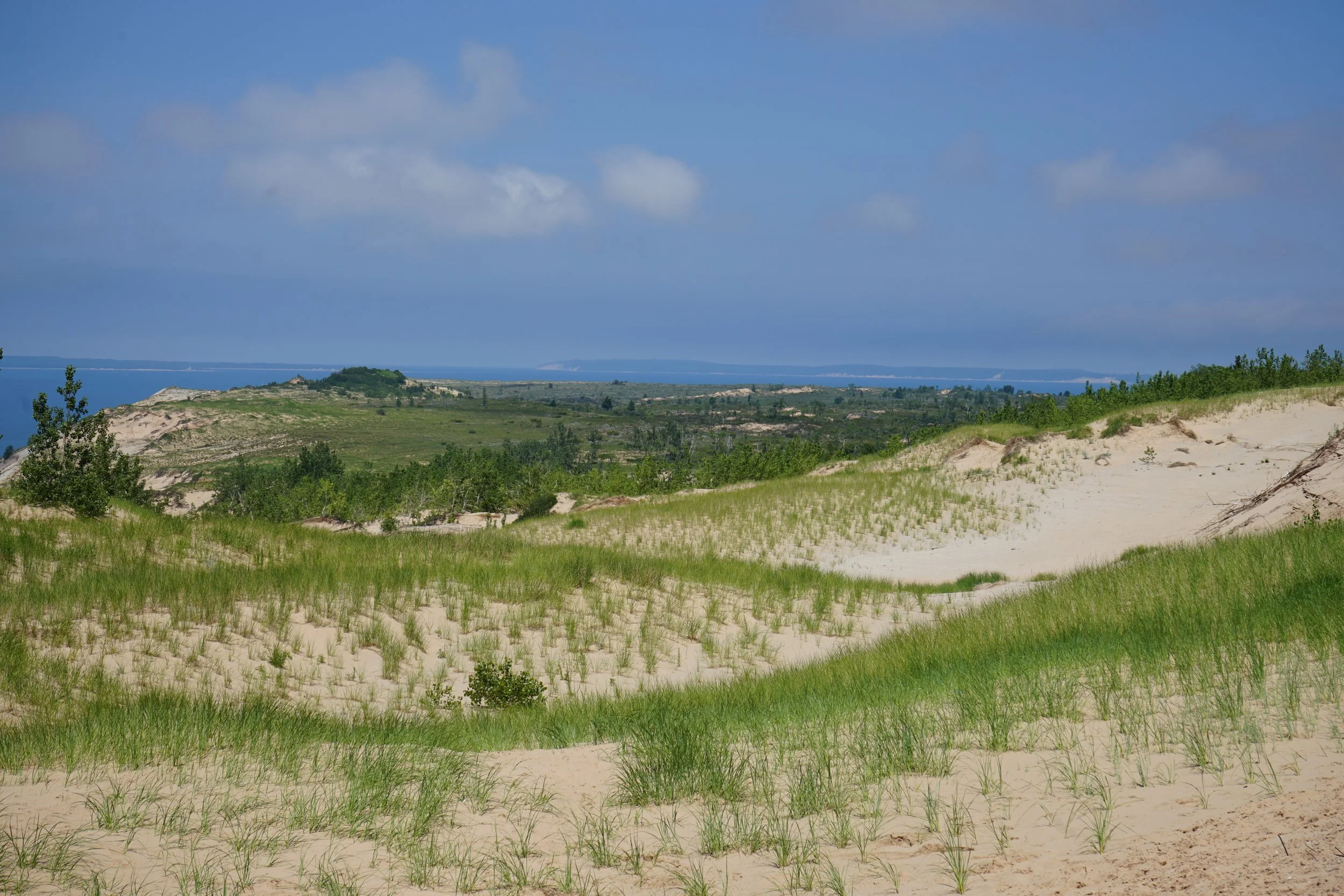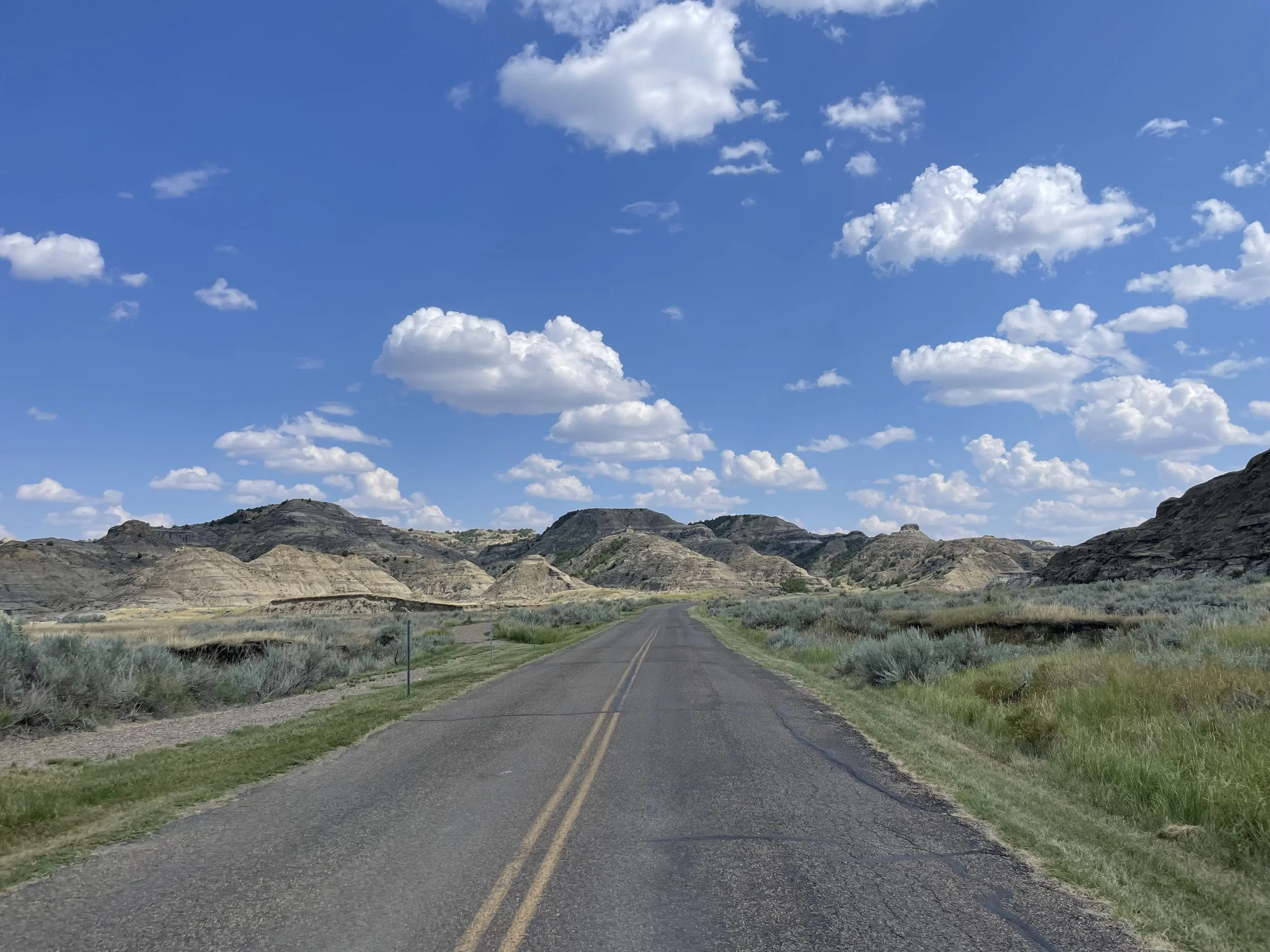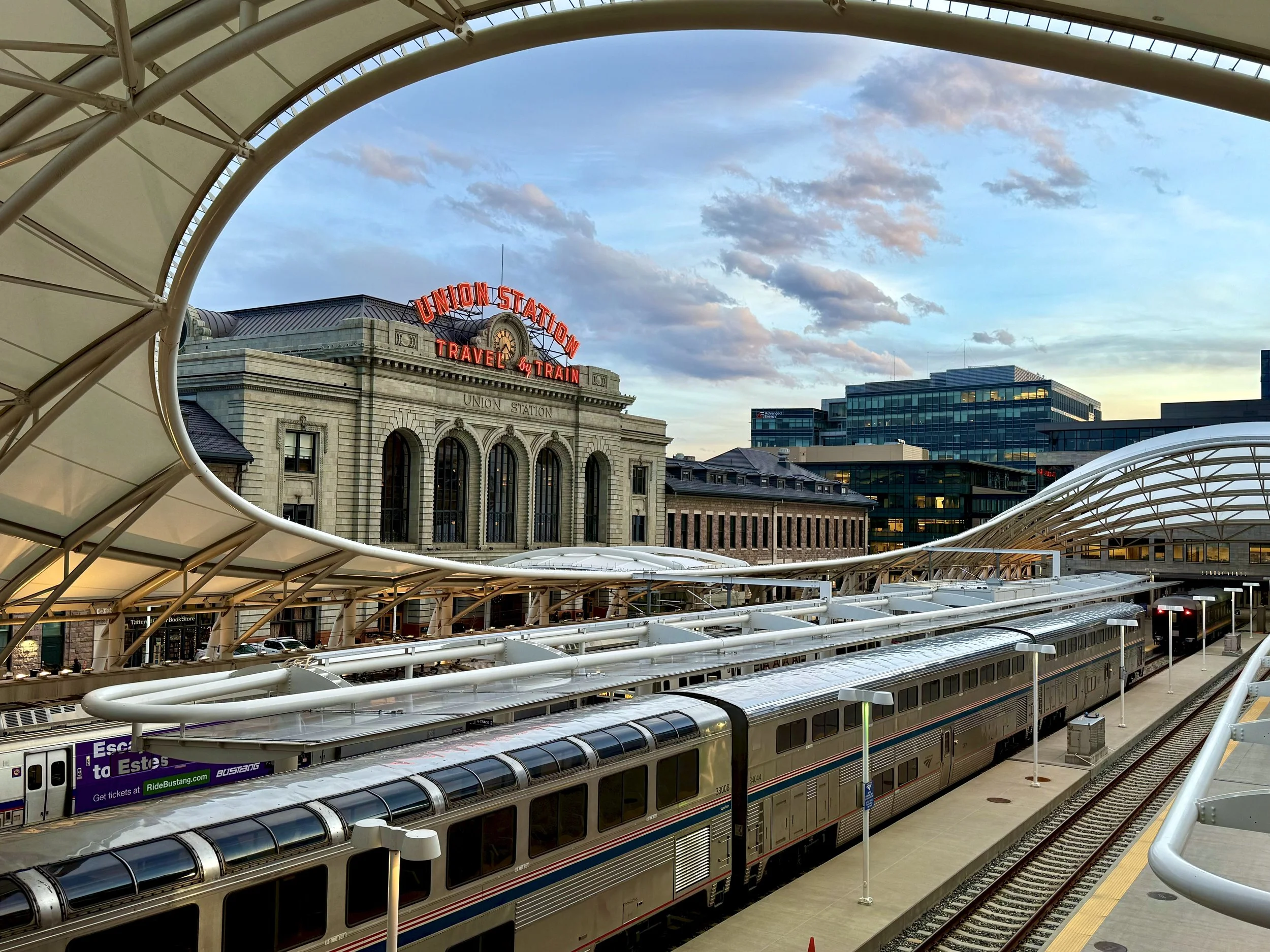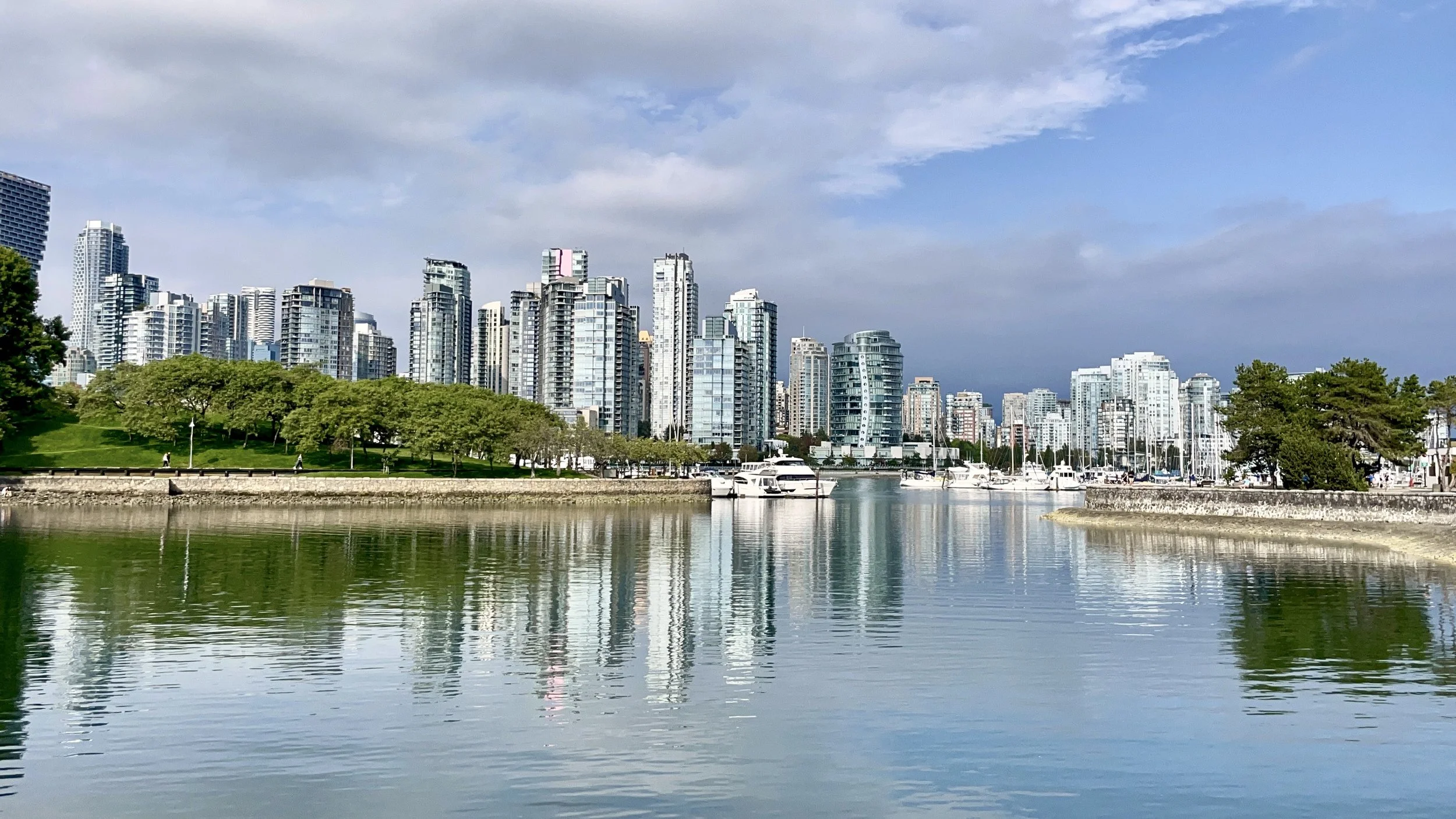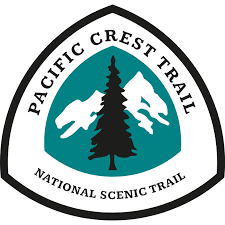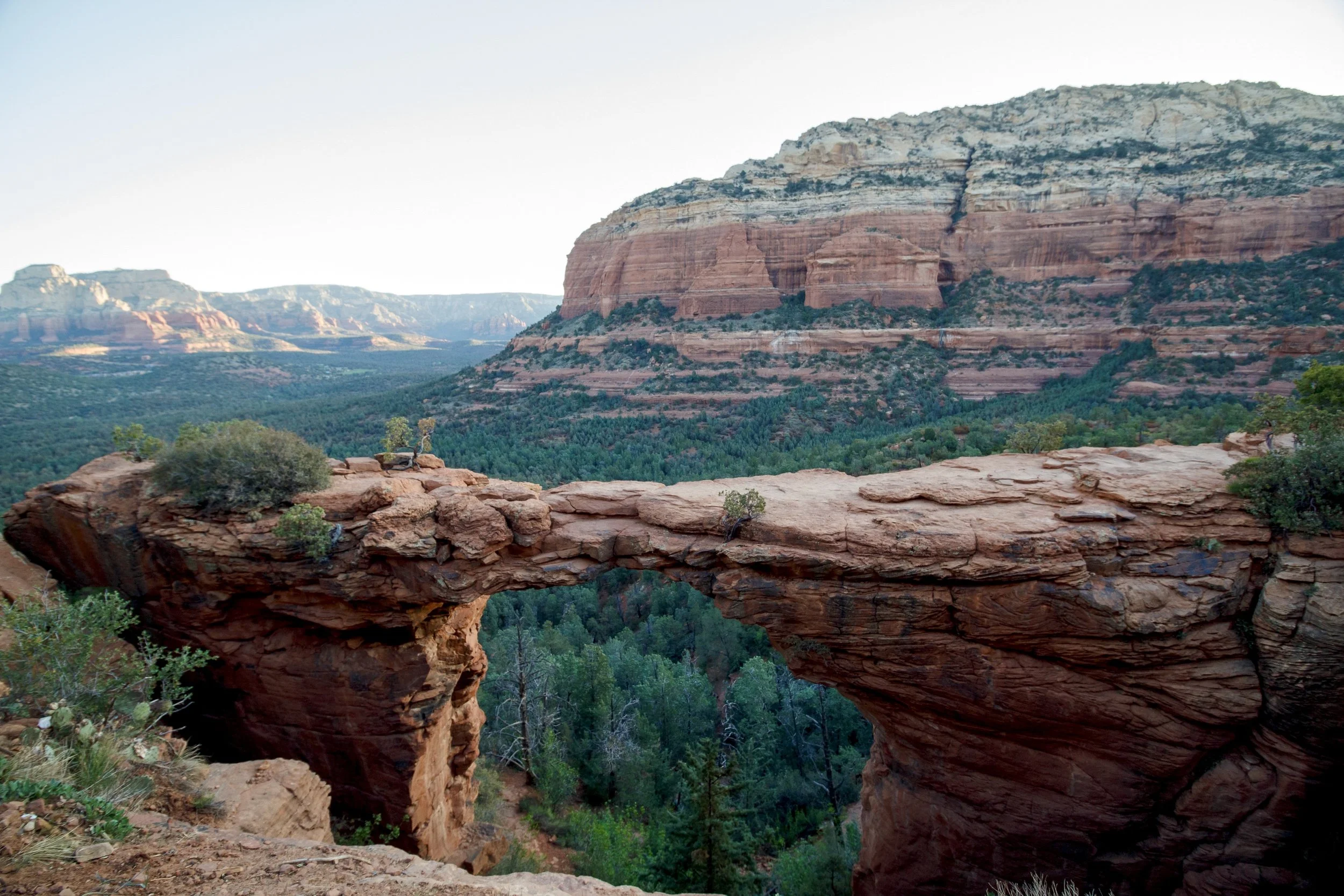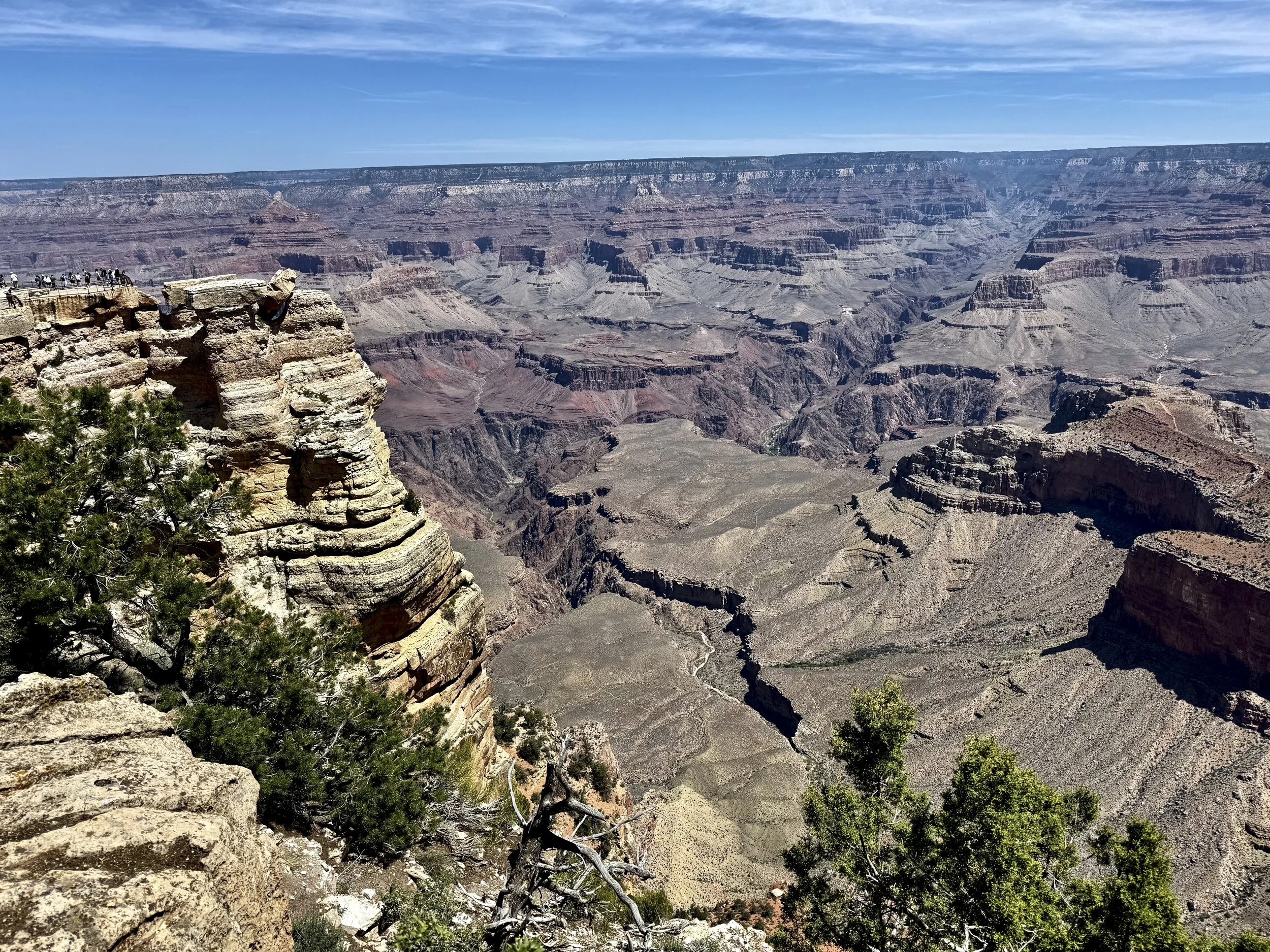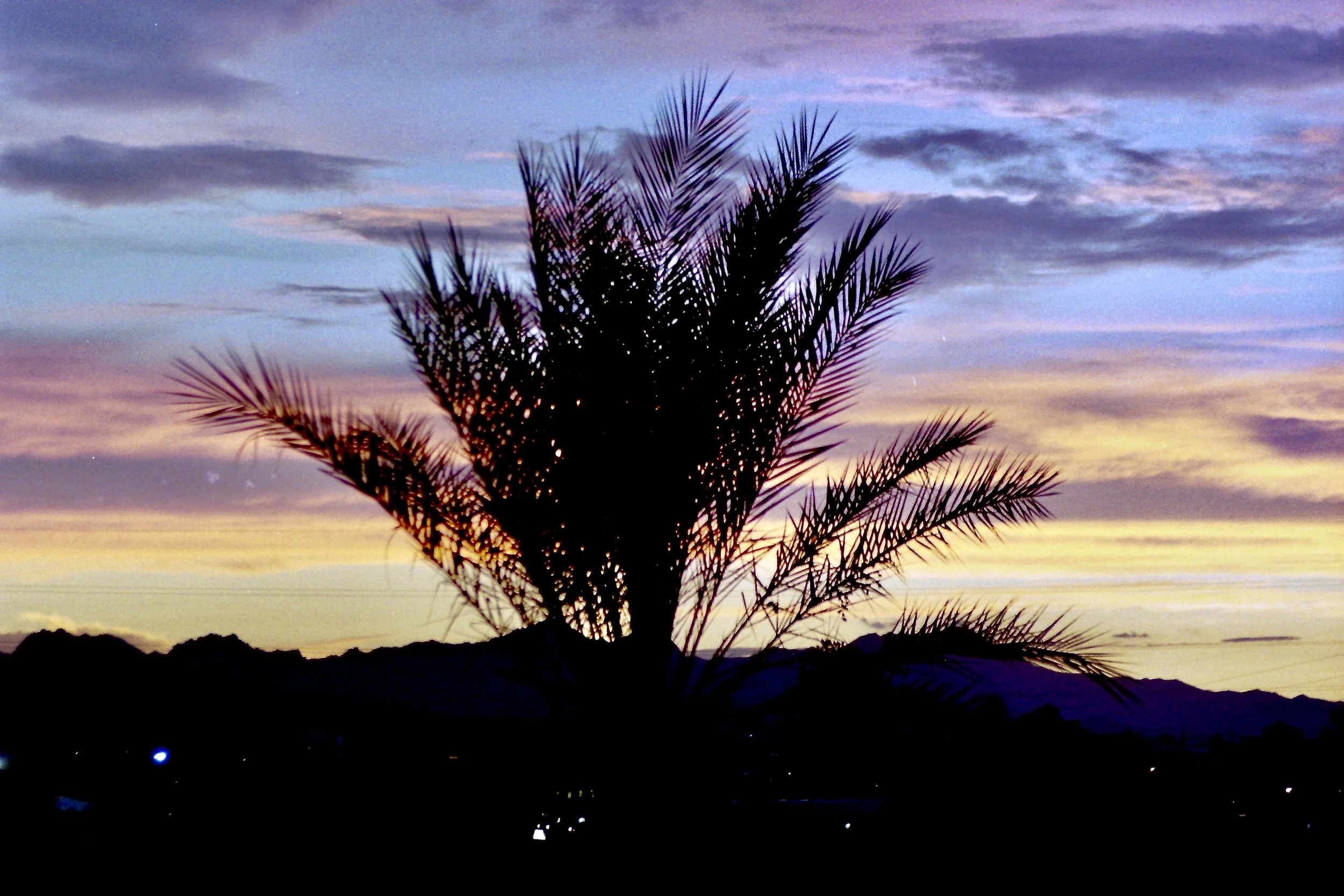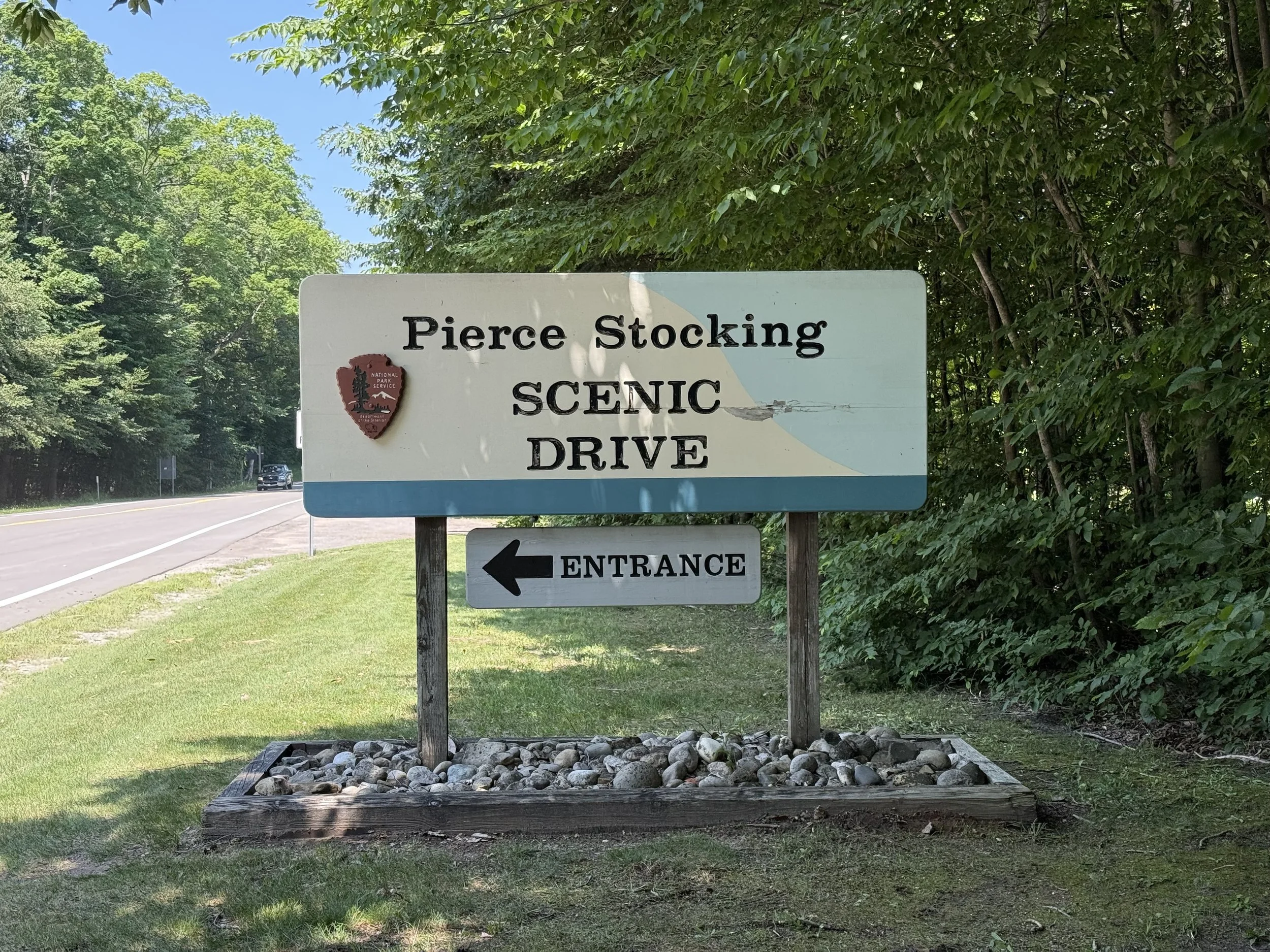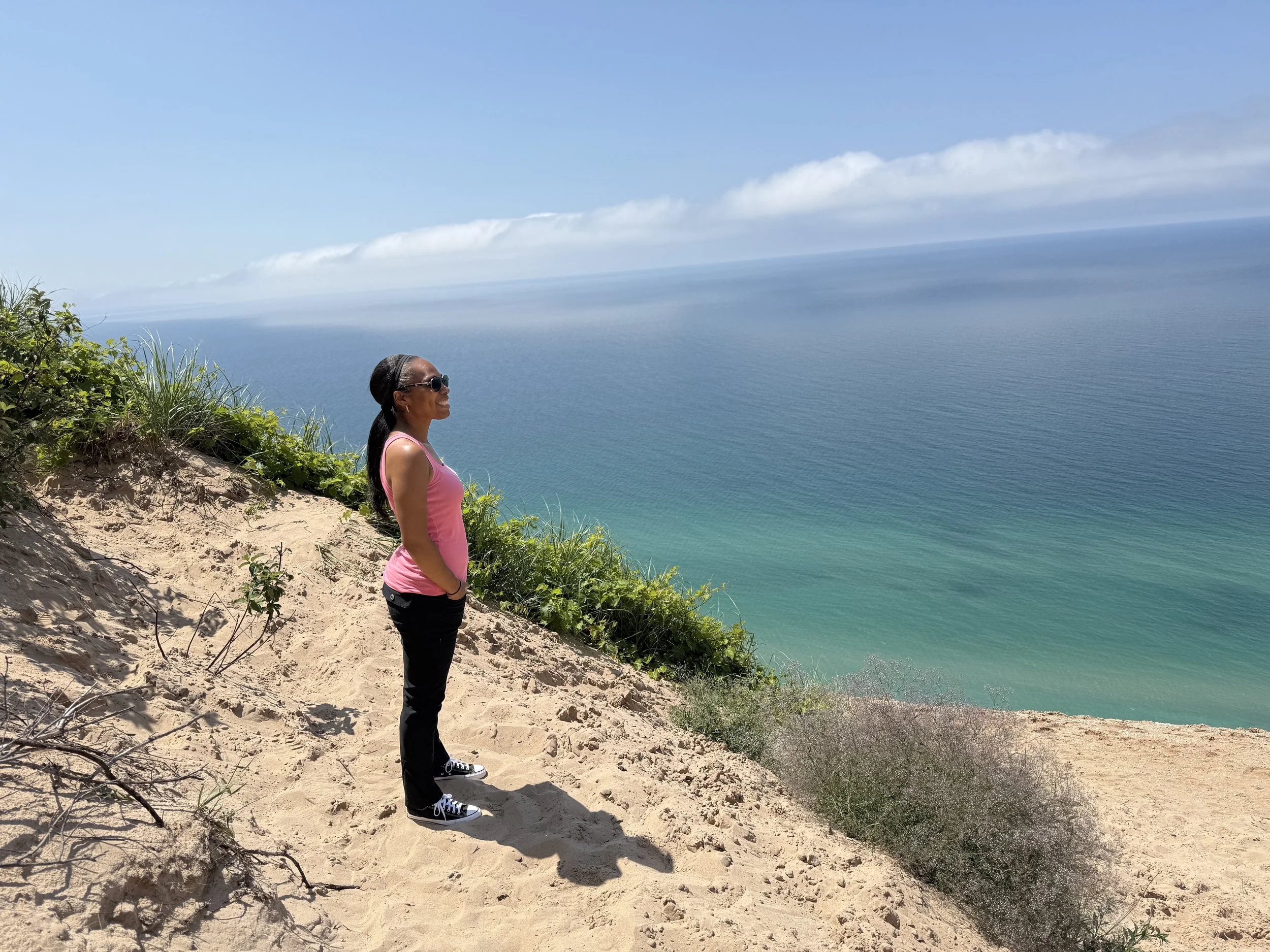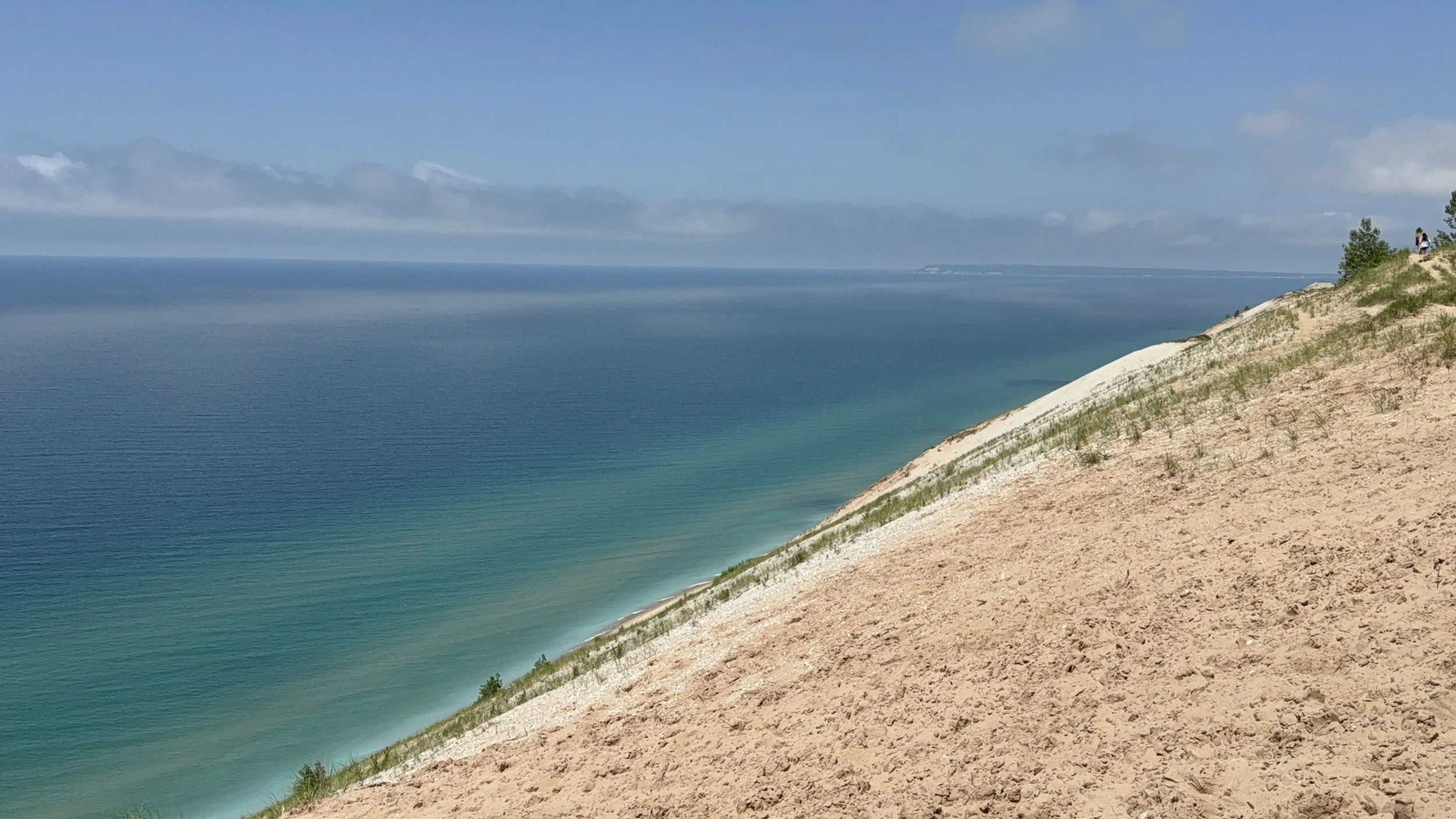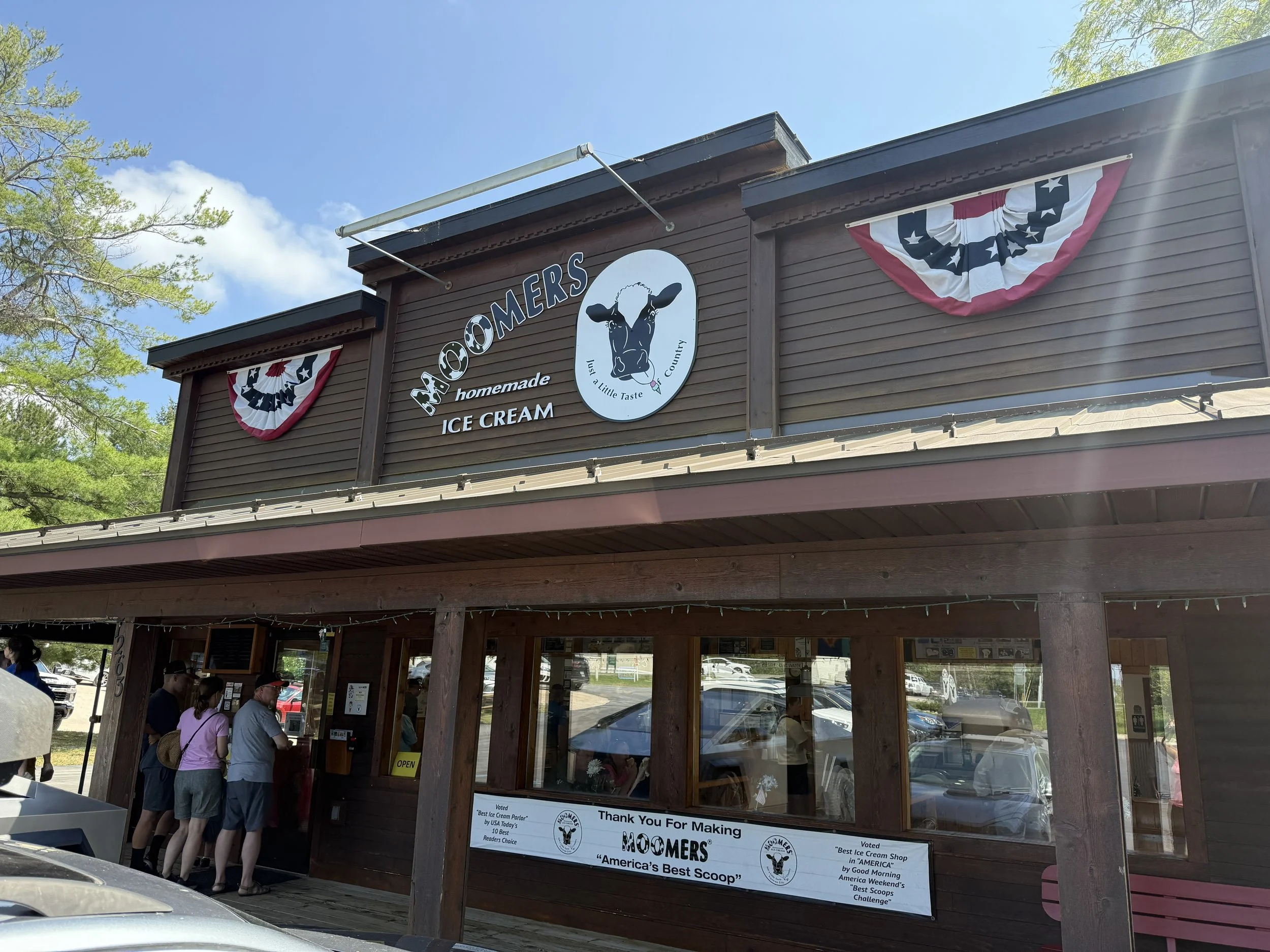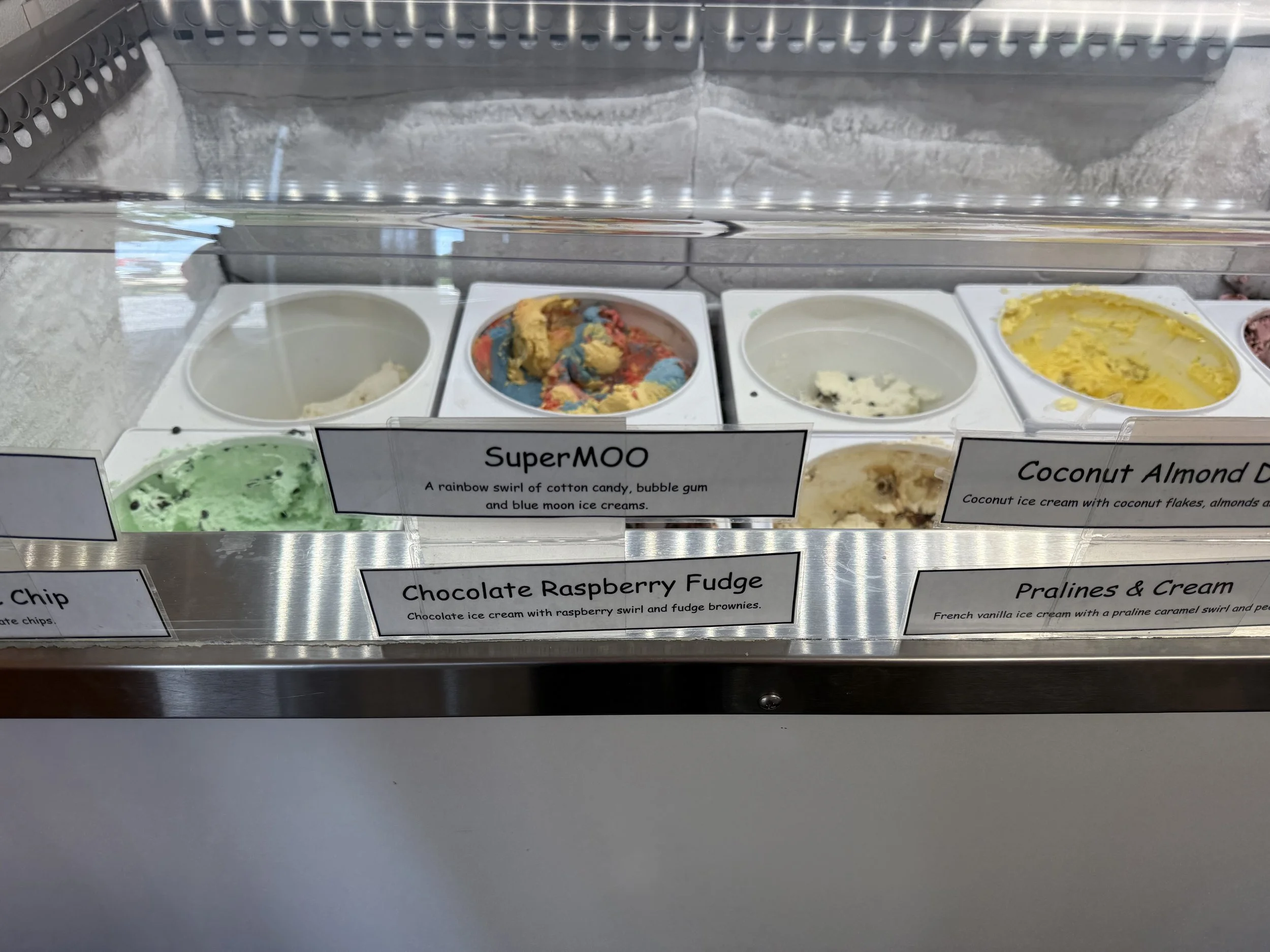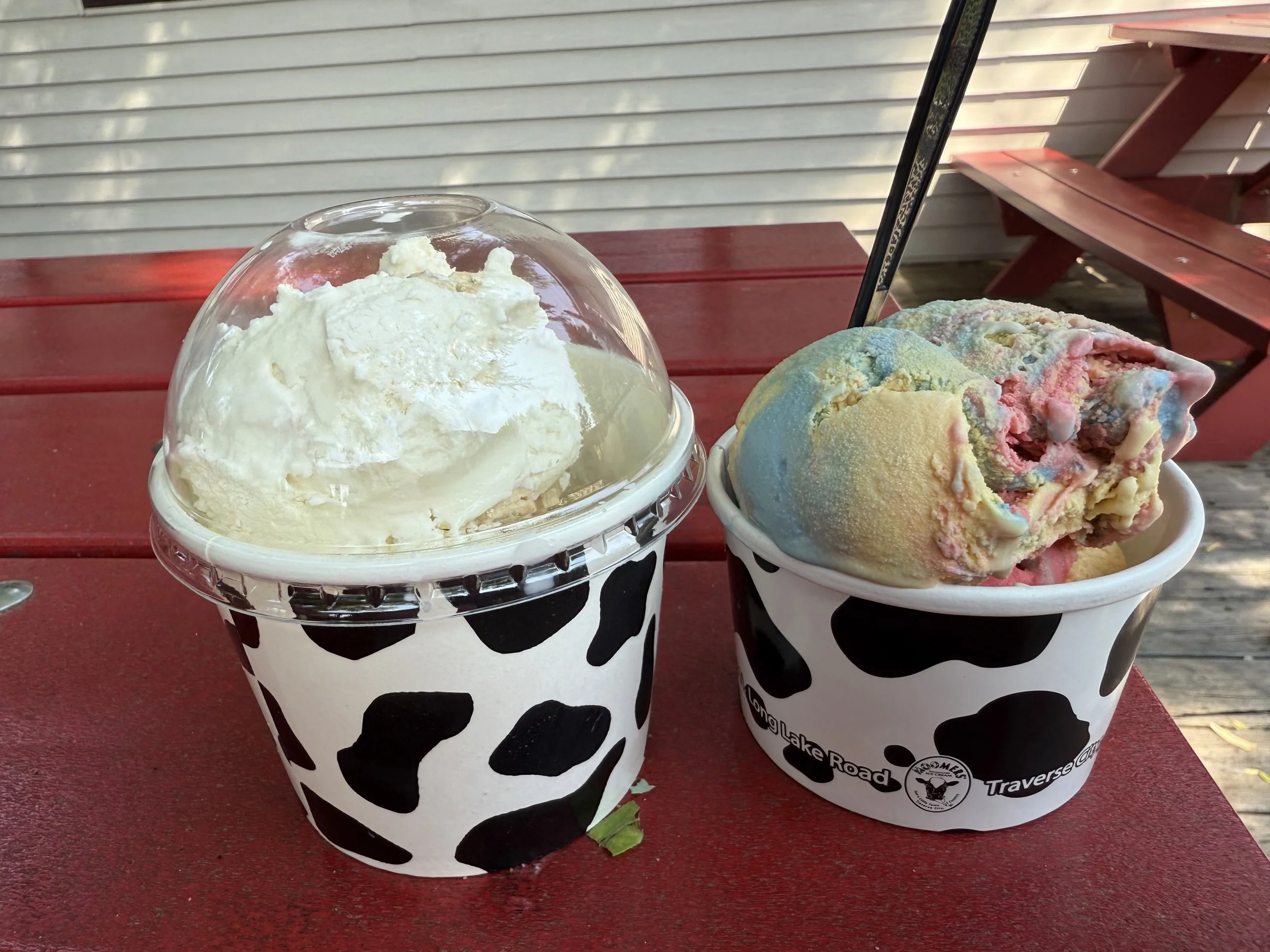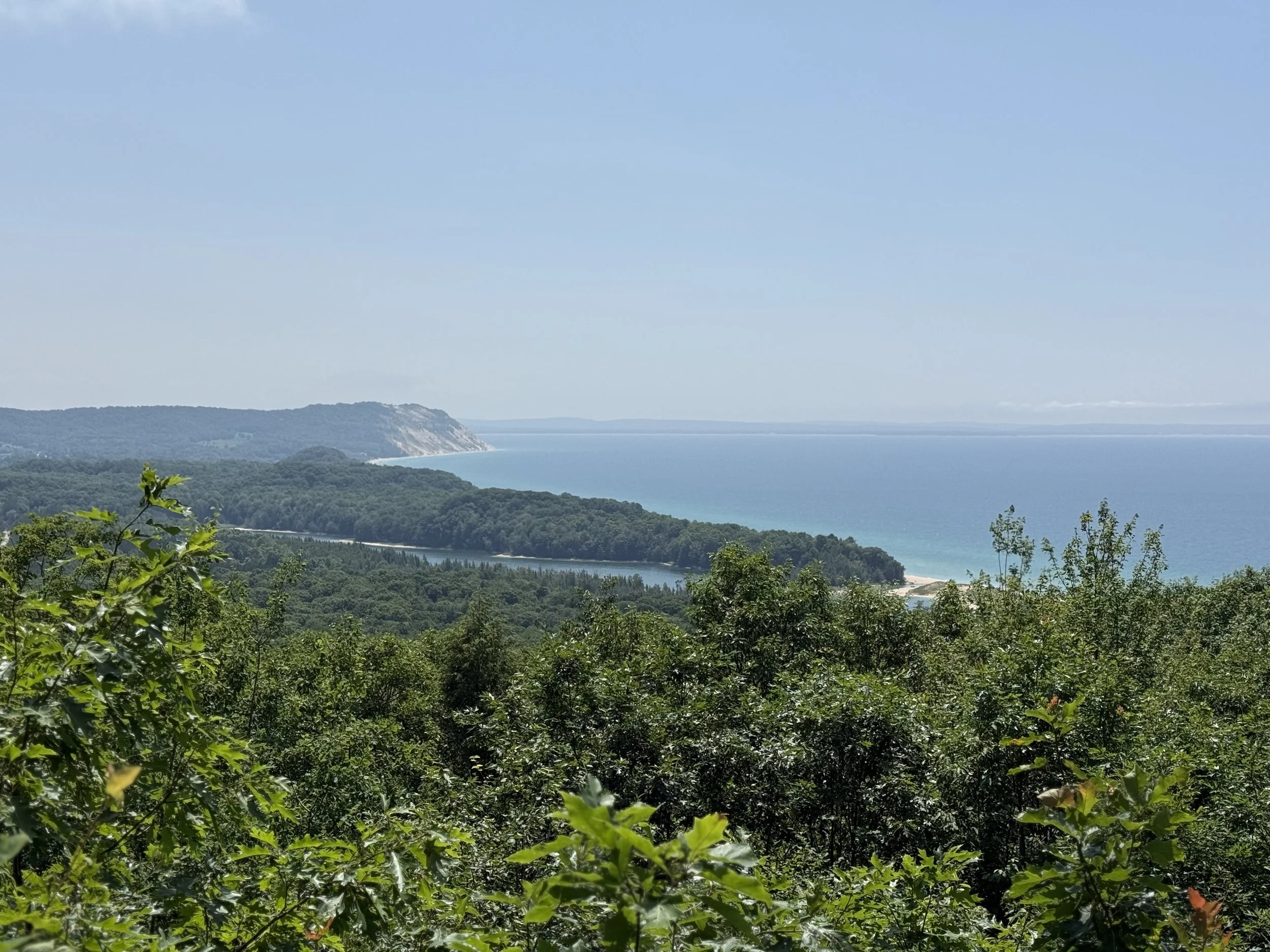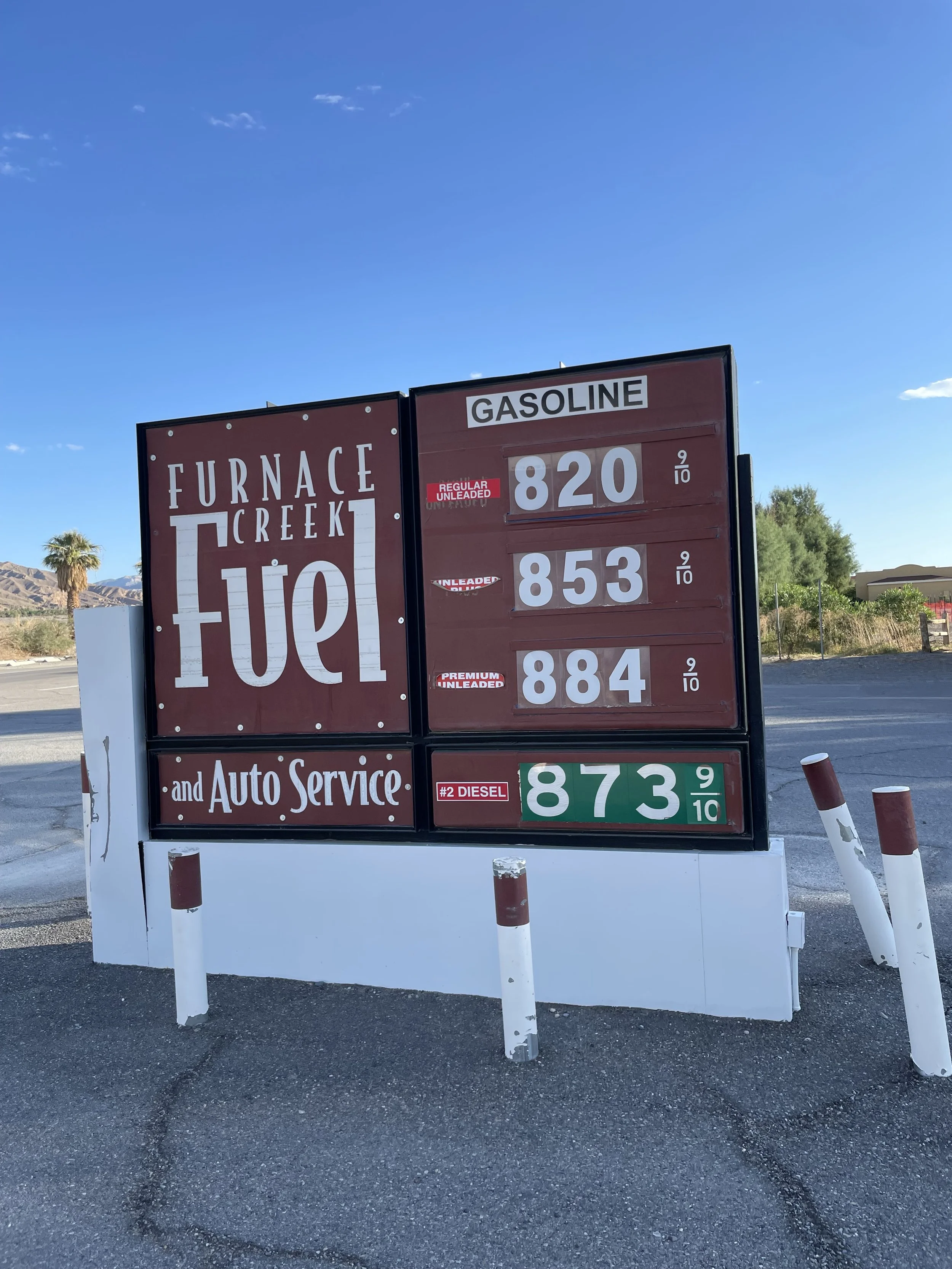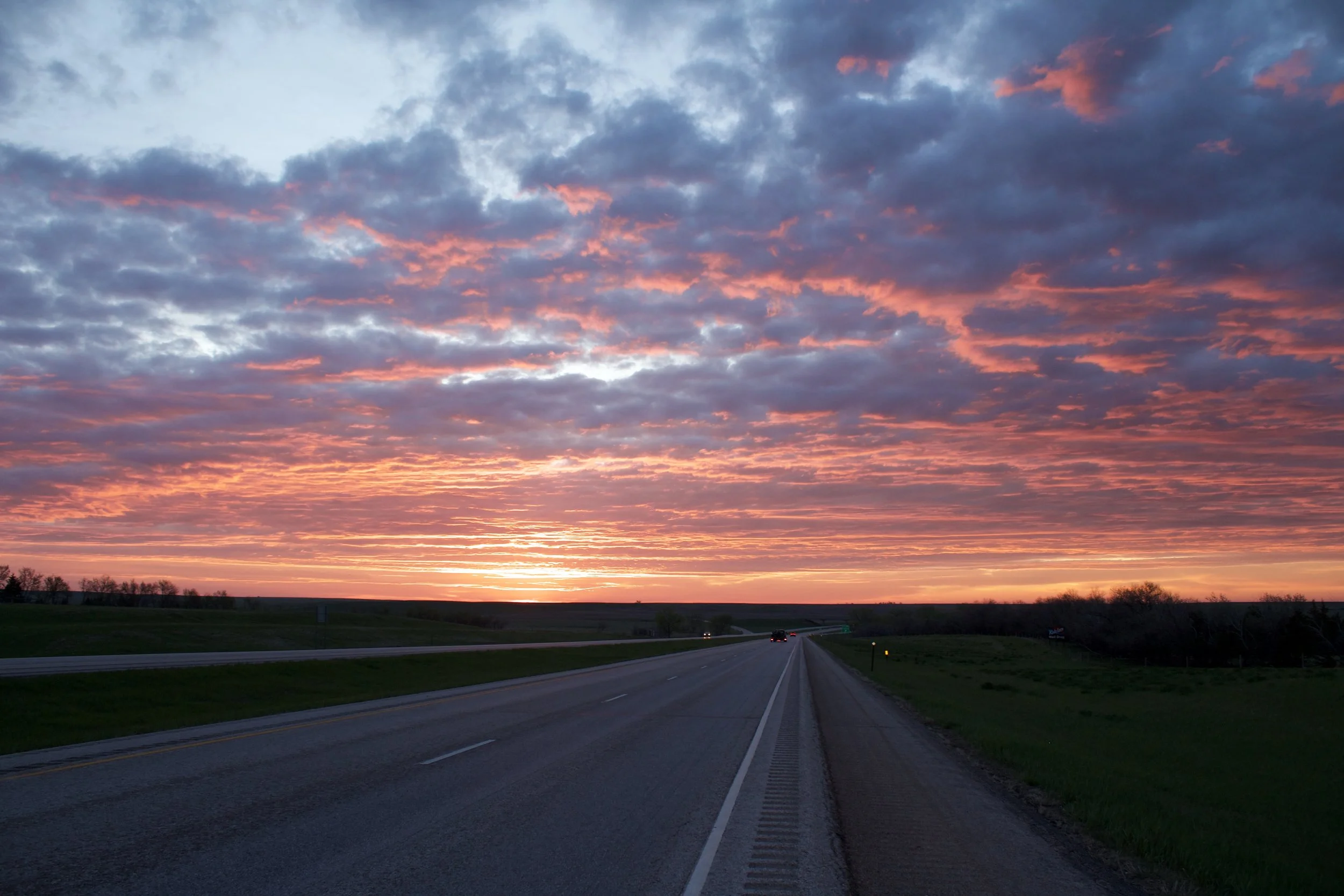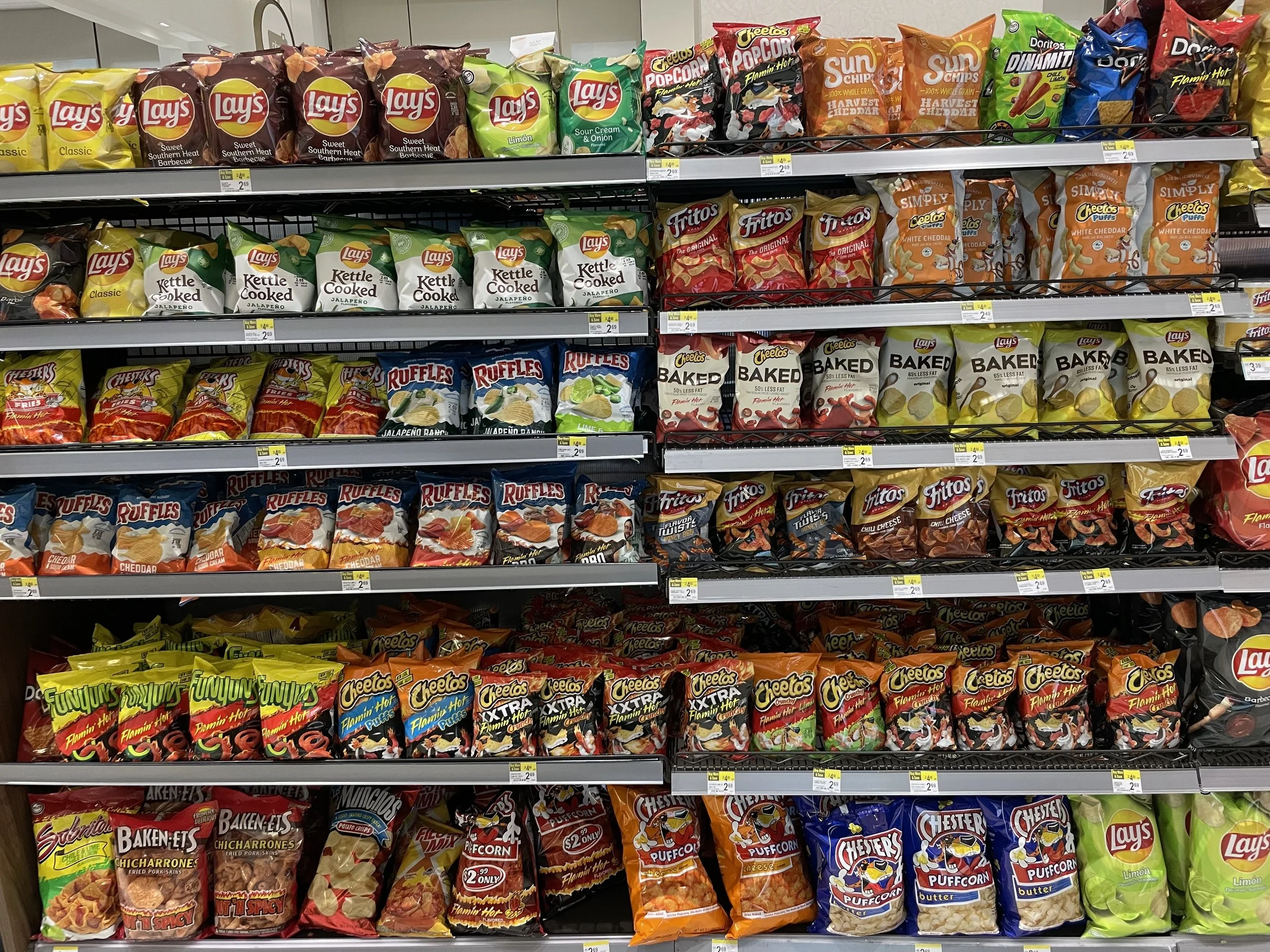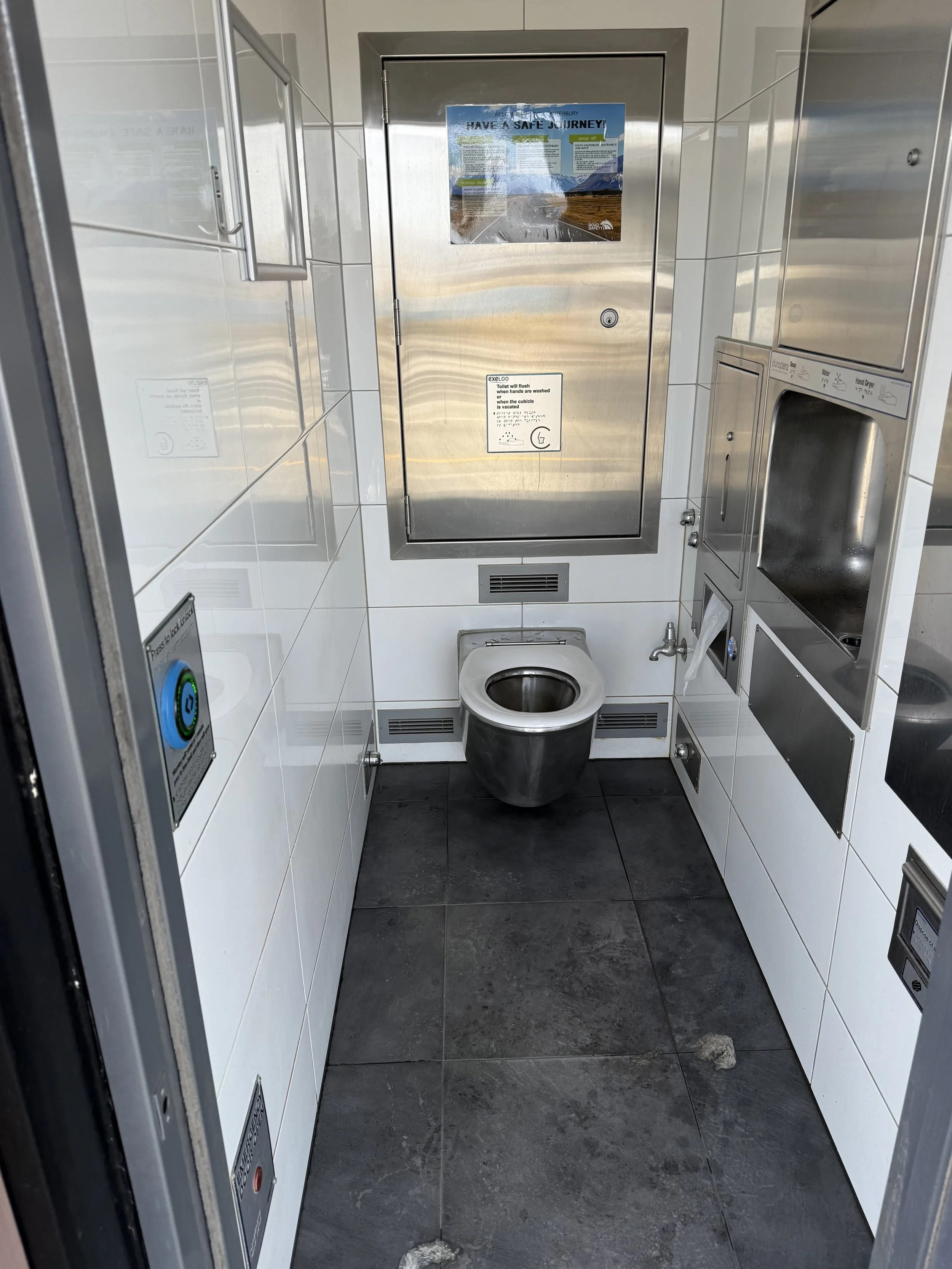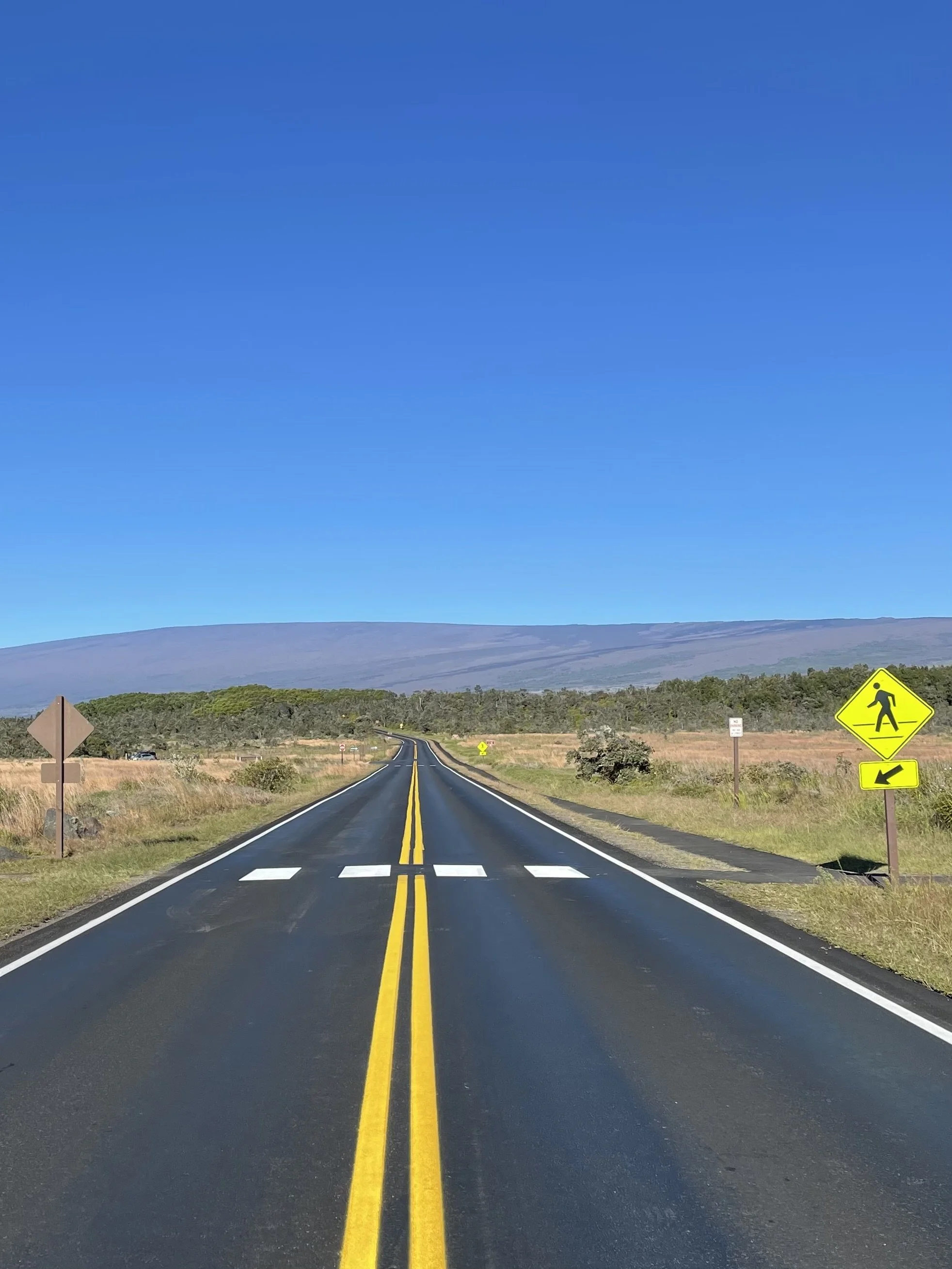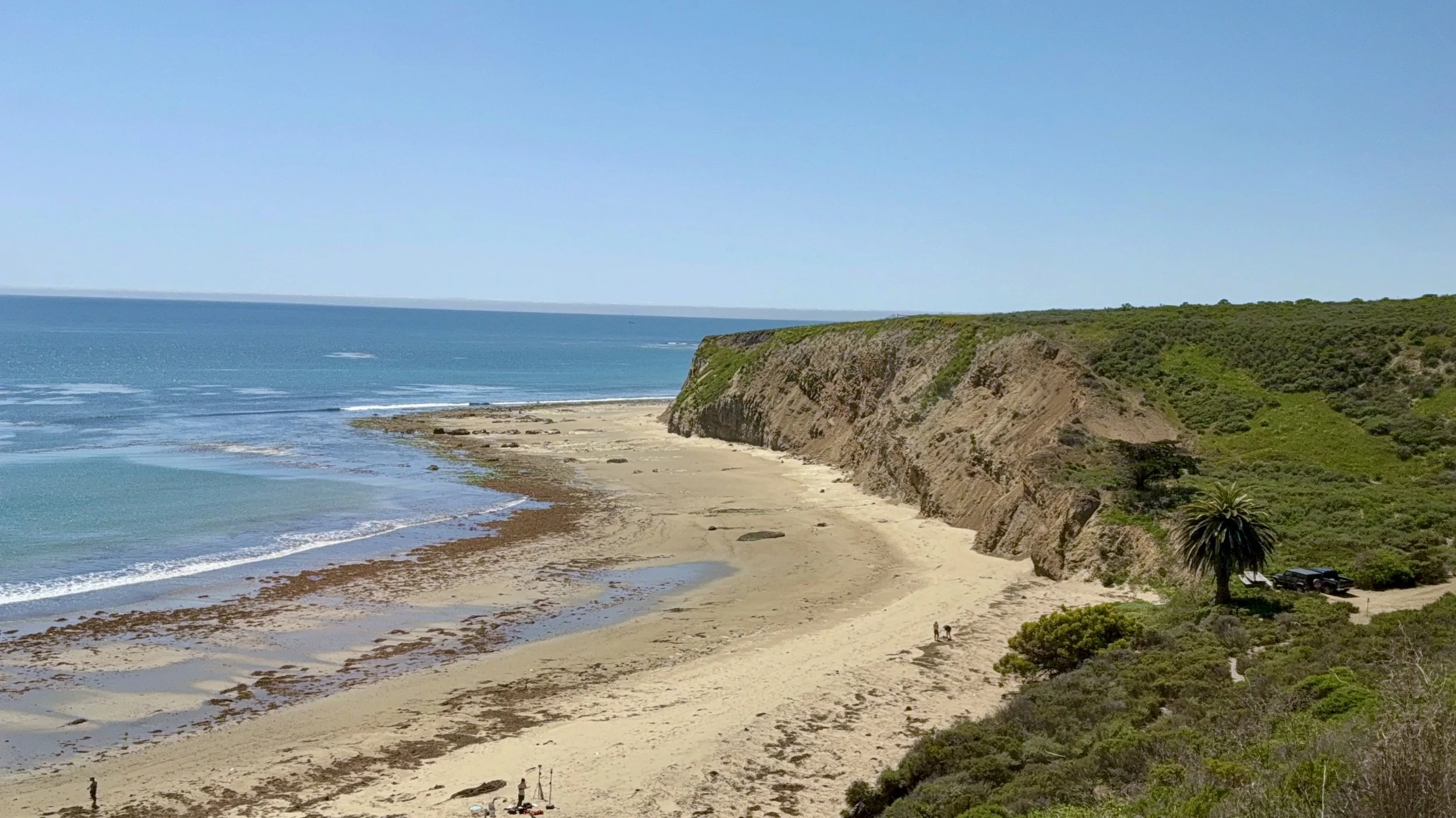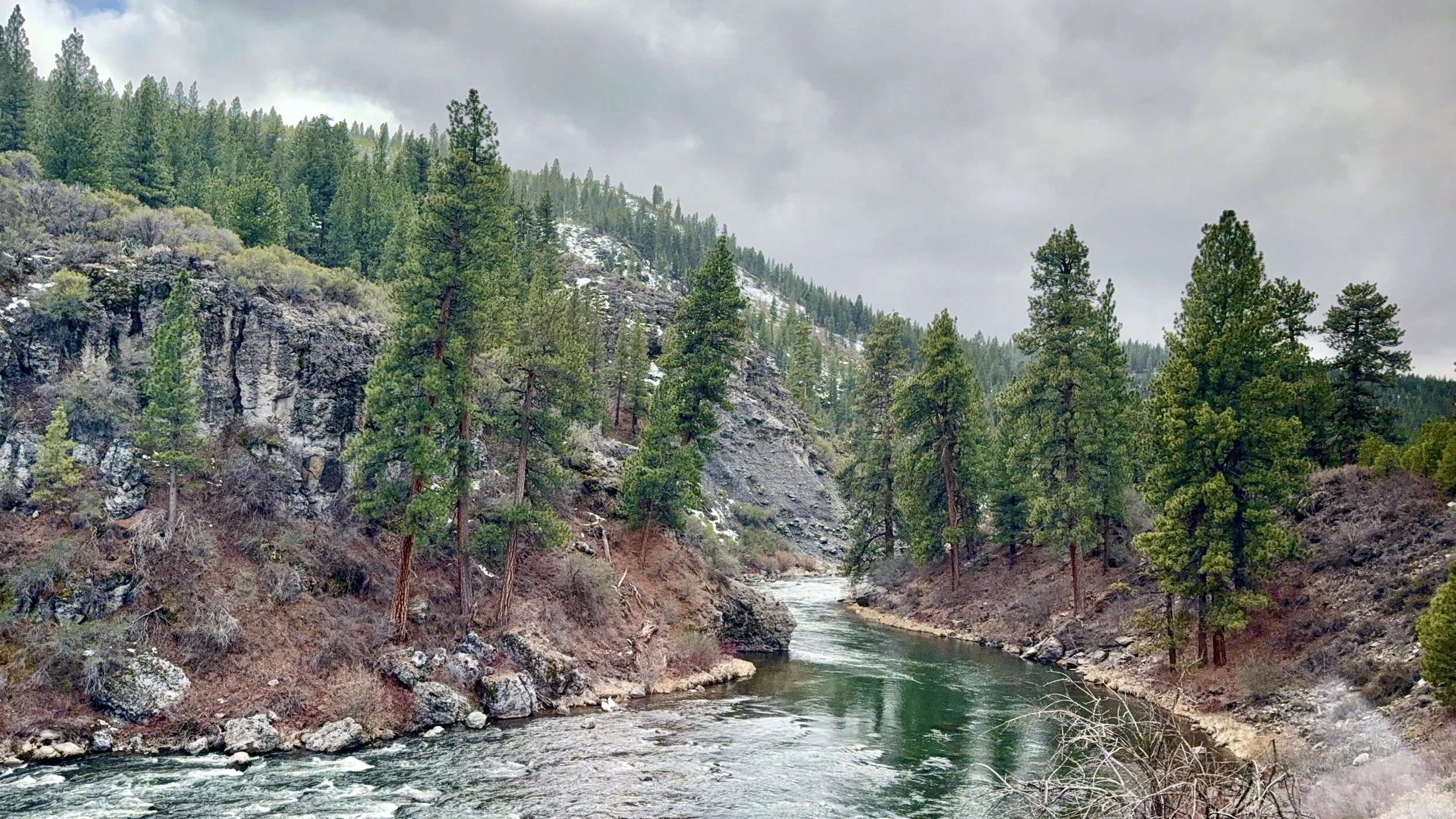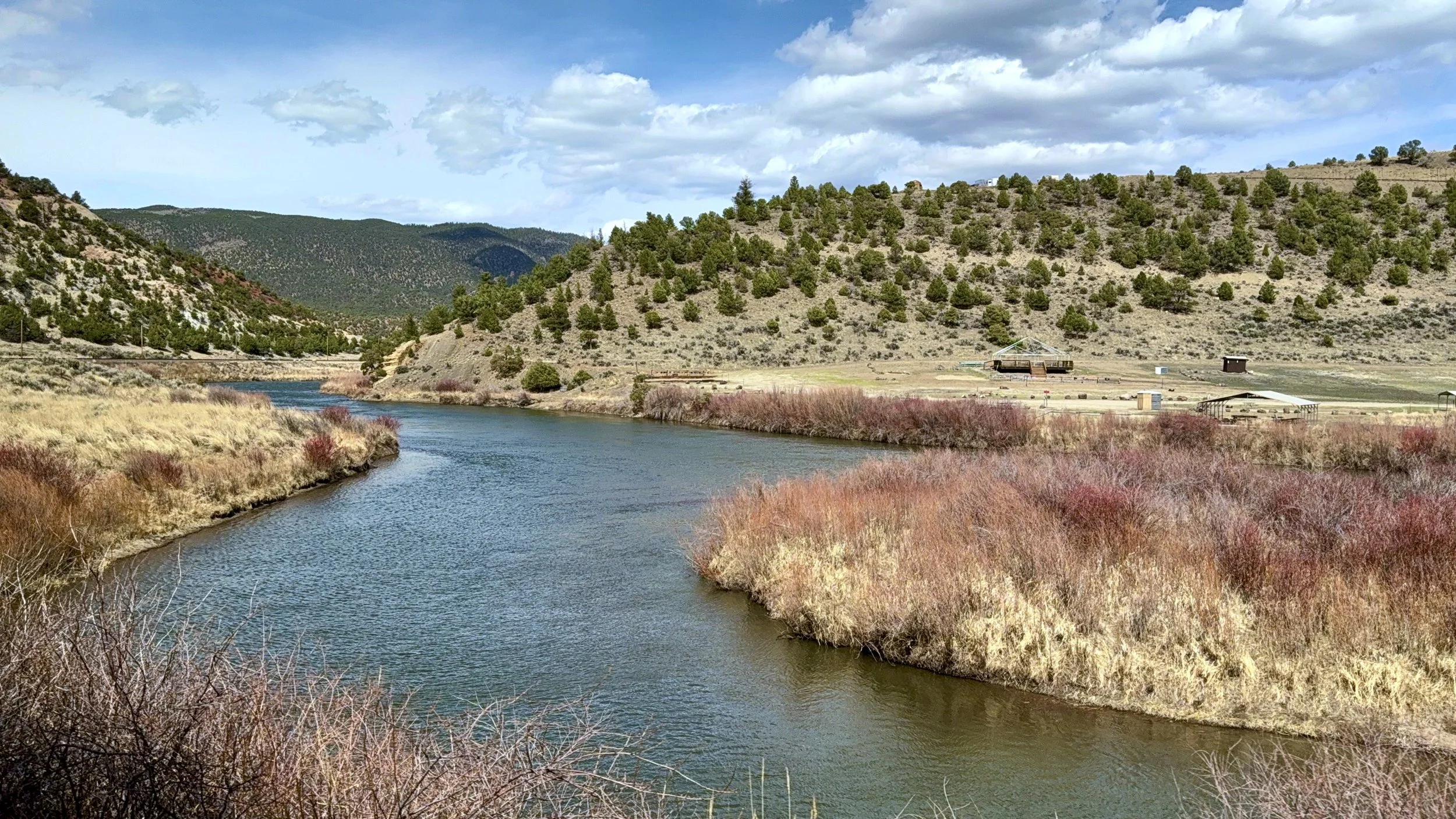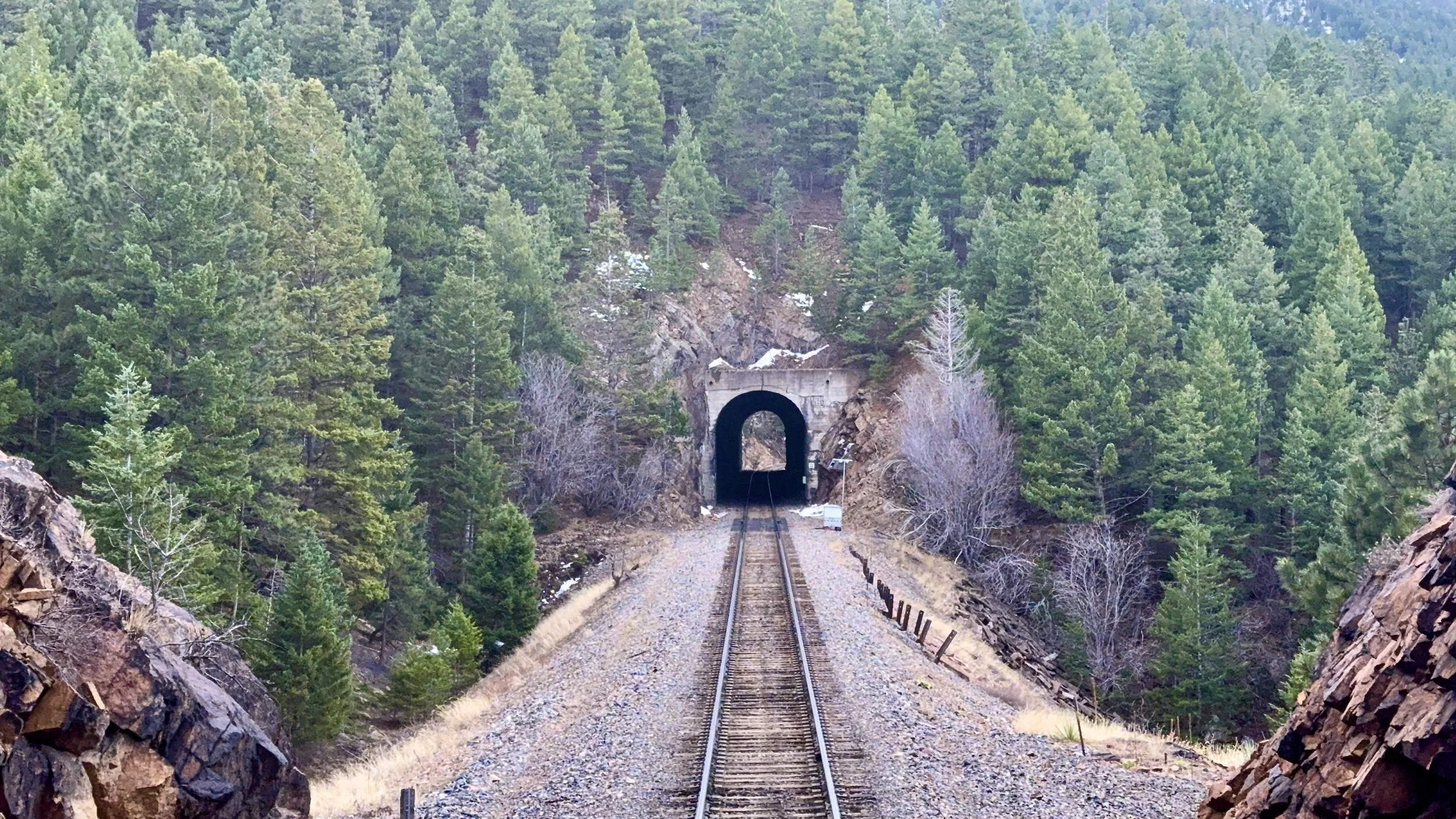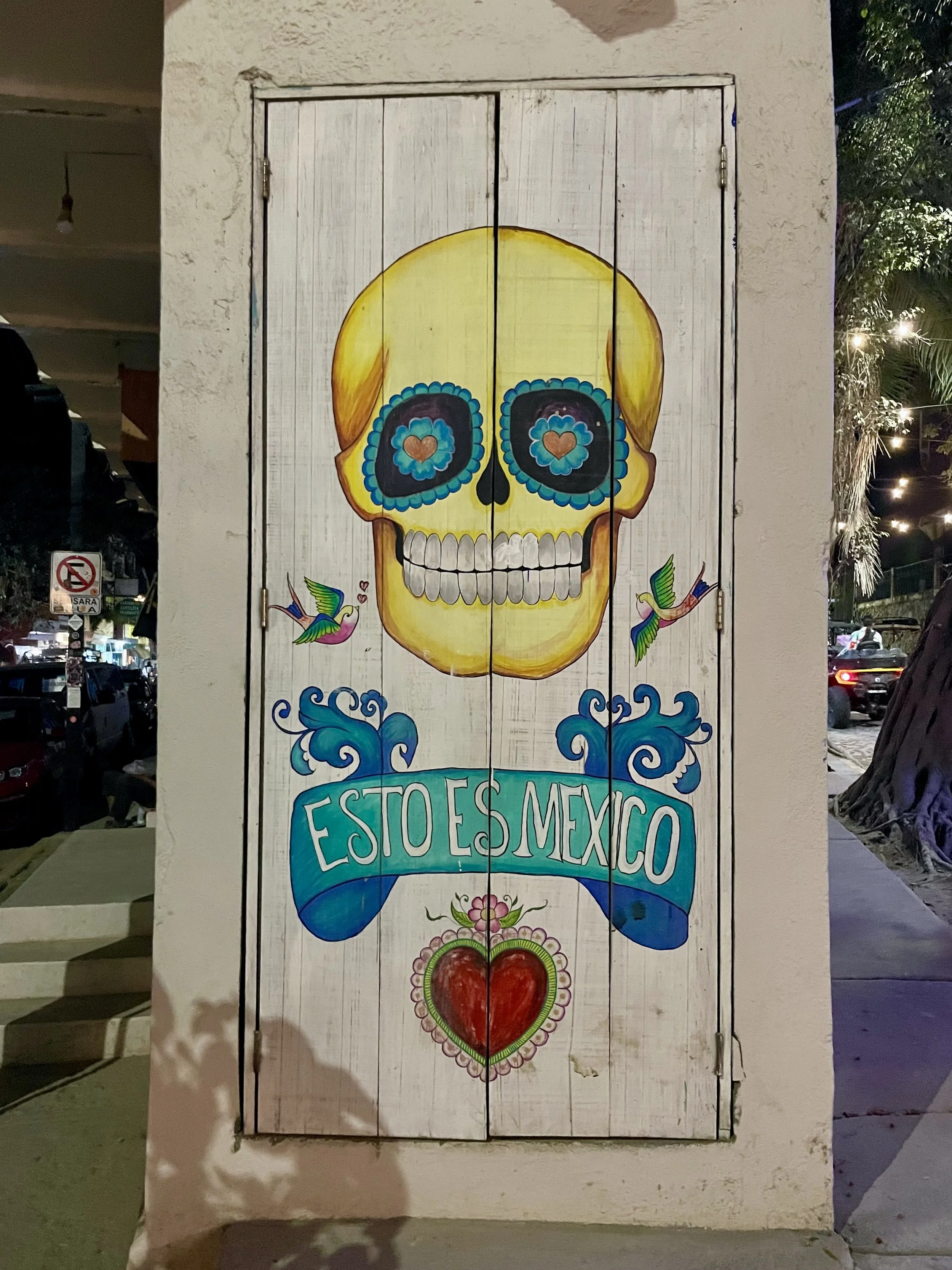America's Long Trails: Overview of the AT, PCT, and CDT
Hiking a section of the AT in Shenandoah National Park
Hiking The Continental Divide Trail (CDT), Pacific Coast Trail (PCT), and Appalachian Trail (AT)
A Beginner-Friendly Overview
I need to be upfront: I have never attempted to hike any of these trails end-to-end. My experience is limited to day hikes on trail sections. But during those shorter visits, I've had the chance to meet and talk with many thru-hikers, the determined few who walk an entire long-distance trail in one continuous journey.
A thru-hiker starts at one end, finishes at the other, and spends months living outside. They carry their own gear, food, shelter, and water. It's less about speed and more about staying consistent until the very end.
The portions of these trails I've seen are beautiful, wild, and challenging. They show you just how vast the country is when you leave the highway and choose a footpath instead.
This guide provides an overview of each trail, discusses why people take these journeys, and points you toward resources for learning more.
Why People Walk the Long Trails
The reasons for hiking these trails are varied and deeply personal. Some are looking for a break from their daily schedule. Others want a challenge that lasts longer than a weekend. Many start after a major life change. And some simply want to see the country at a simpler, slower pace.
If you talk to thru-hikers, you’ll hear a common thread:
Time away from screens and a chance to think.
The simple routine of walking, eating, and sleeping.
A chance to meet people who share the same extreme goal.
Access to scenery that cannot be reached by car.
The National Trails System
The Appalachian Trail (AT), Pacific Crest Trail (PCT), and Continental Divide Trail (CDT) were created and protected as part of the National Trails System. They were established to preserve long-distance routes that connect major landscapes and give people a chance to explore them.
Together, these three trails are known to hikers as the Triple Crown. They stretch from the eastern mountains to the deserts of the Southwest and through the massive ranges of California and Washington.
The Triple Crown
The Triple Crown refers to hikers who have successfully completed all three trails: the Appalachian Trail, the Pacific Crest Trail, and the Continental Divide Trail. Completing all three adds up to thousands of miles and years of dedicated preparation and experience.
The title is recognized by the American Long Distance Hiking Association West. If you meet someone who has earned it, you are talking to someone who has spent a significant part of their life on trail.
More information: https://aldhawest.org
Why No Popular Coast-to-Coast Trail?
There is no single continuous backcountry footpath that runs from one coast of the United States to the other. One major reason is the landscape. A single east-west route would cross long, dry sections, vast stretches of private land, and numerous major urban areas.
While there is a cross-country route called the American Discovery Trail (linking Delaware to California), it uses a combination of local trails, roads, and paths. The long-distance hiking community remains centered on the north-south mountain routes.
Continental Divide Trail (CDT)
About The Trail
The CDT runs from Mexico to Canada, passing through New Mexico, Colorado, Wyoming, Idaho, and Montana. It follows the Continental Divide, the line that separates waters flowing toward the Pacific from those flowing toward the Atlantic. It is considered the most remote and rugged of the three long trails. Some sections are still being developed, and hikers use multiple alternate routes. Weather, snow travel, elevation, and navigation are all significant challenges.
Official website: https://continentaldividetrail.org
Trail Facts
Distance: About 3,100 miles (varies by route)
Southern Terminus: Crazy Cook Monument in New Mexico
Northern Terminus: Waterton Lake in Glacier National Park
Typical Time to Complete: Five to seven months
Start Time (Northbound): Mid-April to Mid-May
Start Time (Southbound): Late June or July
Resources and Risks
Planning Resources:
Continental Divide Trail Coalition: https://cdtcoalition.org/
FarOut navigation maps: https://faroutguides.com/continental-divide-trail-map/
Planning guides from experienced hikers on sites like The Trek.
Key Risks: High elevation, long dry stretches, steep snow, thunderstorms, navigation issues in unmarked areas, wildfire conditions, and grizzly bear activity (Montana and Wyoming). This is the most difficult of the Triple Crown trails.
Pacific Crest Trail (PCT)
About The Trail
The PCT runs from Mexico to Canada, passing through California, Oregon, and Washington. It moves from the arid Southern California desert into the high Sierra Nevada and then through the rugged Cascade Range. This trail is known for wide open mountain views, high passes, and long stretches of backcountry with no services. It is well-marked and highly popular, but still extremely challenging.
Official website: https://www.pcta.org
Trail Facts
Distance: About 2,650 miles
Southern Terminus: Campo, California
Northern Terminus: The border crossing into British Columbia (near Manning Park)
Typical Time to Complete: Four to six months
Start Time (Northbound): Late March through early May (to time the Sierra snowmelt)
Start Time (Southbound): Late June or July
Resources and Risks
Planning Resources:
Pacific Crest Trail Association (PCTA) — official trail site & planning info: https://www.pcta.org/
PCTA Interactive & downloadable maps: https://www.pcta.org/discover-the-trail/maps/
FarOut PCT guide / navigation maps: https://faroutguides.com/pacific-crest-trail-map/
Halfway Anywhere — most recent PCT Hiker Survey (2024): https://www.halfwayanywhere.com/trails/pacific-crest-trail/pct-hiker-survey-2024/
Key Risks: Snow and ice in the Sierra Nevada, high river crossings during snowmelt, long dry stretches in the desert, wildfire closures, smoke, and weather in the northern mountains.
Appalachian Trail (AT)
About The Trail
The AT is the oldest of the long trails. It runs from Georgia to Maine along the Appalachian Mountains, passing through fourteen states. It is known for its lush green forest, challenging rocky climbs, and close connection to small mountain towns along the way.
Official website: https://appalachiantrail.org
Trail Facts
Distance: About 2,190 miles (varies yearly)
Southern Terminus: Springer Mountain in Georgia
Northern Terminus: Katahdin in Baxter State Park
Typical Time to Complete: Five to seven months
Start Time (Northbound): Early March to mid-April
Start Time (Southbound): Late June or July
Resources and Risks
Planning Resources:
Appalachian Trail Conservancy (ATC): https://appalachiantrail.org/
Appalachian Long Distance Hikers Association (ALDHA): https://aldha.org/
FarOut (map-guides / navigation platform for A.T. & other trails): https://faroutguides.com/ and the specific A.T. map page: https://faroutguides.com/appalachian-trail-map/
Key Risks: Steep climbs, slippery rock, heat and humidity in the South, storms, ticks, crowded sections in peak season, and the overall physical and mental challenge of walking for several months.
Arizona
Sedona
The Land of Sunburn, Saguaros, and Seriously Beautiful Landscapes
I have visited Arizona multiple times over the years and each trip has shown me how truly diverse the state is. On one visit I am getting sunburned, and on another I am freezing. It is a dynamic place that keeps you on your toes.
Tucson and the Biosphere
My first trip to Arizona was in the early 2000s, when I attended a conference in Tucson. While there, I visited Biosphere 2, a massive glass complex originally built to test whether humans could survive in a completely self-sustaining environment. The experiment ultimately failed, but hey, they gave it a 200 million dollar try. Today it is run by the University of Arizona, and visitors can tour miniature rainforests, deserts, and even a tiny ocean biome.
When I was not in a lecture hall, I was out exploring the desert terrain. Arizona sunsets are on another level. The wide open skies, massive saguaros, and fiery colors make them unforgettable. It was also in Tucson that I ended up saving one of my conference colleagues from drowning in a hotel pool, but that is a story for another day.
Tucson’s other charms include Saguaro National Park, which protects the forests of giant cactus that define the region, and the city’s strong Mexican American influence. Tucson is actually a UNESCO “City of Gastronomy” and is known for its chile heavy cuisine and Sonoran hot dogs, a local favorite.
Sunrise from Camelback Mountain
Phoenix: Heat, Hikes, and Lessons Learned
On my second visit to Arizona, I stayed in Phoenix. About an hour after I arrived, I made the rookie mistake of hiking Piestewa Peak in the middle of a cloudless April afternoon. I brought a couple bottles of Gatorade and thought that would carry me through. News flash, it did not. In that kind of heat, water is what you need. The mountain is short but steep, and dehydration nearly had me quitting before the summit. I crawled along in the scarce shade, took it slow, and eventually made it to the top. The view was worth the struggle, but if you go, hike in the morning or late afternoon. Your body will thank you.
The following morning, a little wiser and properly fueled, I set out for Camelback Mountain, one of Phoenix’s signature hikes. I arrived at the trailhead around 5:00 a.m. with a friend, and even at that hour we could already see headlamps bobbing along the ridge from hikers who had started earlier. We began just as the first light broke the horizon, and watching the sunrise spill across Phoenix felt like something out of a movie.
Camelback has two routes to the summit, one shorter and less intense, and the other longer and more challenging. The easier trail was closed that morning, so we had no choice but to tackle the tougher one. The climb was strenuous, and I made plenty of stops along the way. Fortunately, the trail was busy, so if you did run into trouble, someone would notice quickly. With Arizona’s heat and the occasional poor planning of hikers, the city actually closes Camelback in the summer months after too many rescue airlifts. Thankfully, we were not part of that statistic. We sweat our way to the top, soaked in the view, and shared high fives with fellow hikers who cheered each other on all the way up.
When I was not climbing mountains, Phoenix itself had plenty to offer. The Desert Botanical Garden is a showcase of desert plants from around the world, while the Heard Museum is dedicated to Native American art and history. Baseball fans flock to the city in spring for Cactus League spring training, which brings major league teams and their fans from across the country.
Devil’s Bridge
Sedona’s Red Rocks
You would think two days of hiking would have been enough, but on my third morning in Arizona, I drove north from Phoenix in the pitch black hours before dawn. Arizona earns its reputation as a dark sky state, and when the first light hit Sedona’s red cliffs, the drive suddenly felt worth it.
I hiked to Devil’s Bridge, a natural sandstone arch stretching across a canyon. Many visitors walk across it for the photo, but I stuck to a safe distance and admired it from the side. Even from there, it was a striking sight.
Sedona is a hub for hiking, mountain biking, art galleries, and spiritual retreats. Trails like Cathedral Rock and Bell Rock are classic red rock hikes, while the Chapel of the Holy Cross, built directly into the cliffs, is worth a stop whether you are religious or not.
Grand Canyon South Rim
The Grand Canyon and Northern Arizona
My third trip took me to the Grand Canyon, where I managed to get sunburned on just my left side while driving to the park. The canyon itself lives up to the name. It is, quite literally, GRAND. The Colorado River did one hell of a job carving out that layered, multicolored masterpiece, and standing at the rim makes you realize how small you really are. I have a full write-up on the Grand Canyon in the National Park section, if you want all the details.
I passed through Flagstaff late one evening on a cross-country train trip. When I hopped off the train, the 33 degree temperature shocked me. I had been expecting the kind of warmth I was used to in southern Arizona. The station itself was charming, but the cold sent me running back to the comfort of the heated cars. Sitting at 7,000 feet in the San Francisco Peaks, Flagstaff feels like a completely different climate zone. It also serves as a gateway not only to the Grand Canyon but to Walnut Canyon and Sunset Crater Volcano National Monuments.
Tuscon Sunset
Sleeping Bear Dunes Day Trip Guide: How to Spend One Day in Traverse City, Michigan
Some days I wake up and want to see something extraordinary. I’d heard that Sleeping Bear Dunes National Lakeshore was beautiful, so I decided to make the five‑hour drive from Chicago to Traverse City to see it for myself. I grabbed my national park passport book and pass, hopped in the car, and hit the road just after 5:30 a.m.
The drive was smooth and scenic—Michigan really is a lovely state. I arrived at the Philip A. Hart Visitor Centeraround 1:00 p.m. (Address: 9922 Front Street, Empire, MI 49630). It was far busier than I expected for a Wednesday, but hey. I stepped inside, did a quick walk‑through of the small exhibit, spoke to a ranger to get my map and recommendations, and—of course—got my passport stamps. Priorities.
Park Fees:
All private vehicles entering the Lakeshore—including the Pierce Stocking Scenic Drive—require a $25 vehicle pass (valid 1–7 days). Motorcycles are $20, and individuals on foot, bike, or non-commercial tours pay $15. If you have an Annual Park Pass ($45) or a federal Interagency Pass, you’re covered . Fees can be paid in cash or credit at the visitor center or at drive entrances.
Sleeping Bear Dunes is known for its dramatic landscape—towering sand dunes up to 450 ft above Lake Michigan, forested trails, inland lakes, and sweeping shoreline views. The park protects over 35 miles of coastline and includes historic villages and scenic drives .
Since time was ticking, the ranger recommended the Pierce Stocking Scenic Drive, a 7.4‑mile loop with 12 interpretive stops.
Stops 9 & 10—Lake Michigan Overlook & Dune Overlook
At Stop 9, you’ll be standing on top of a 450‑ft dune, gazing over Lake Michigan in all its turquoise glory. A few adventurous souls hiked down—but the slog back up looked brutal. I hung back, soaking in the views, lounging for about 30 minutes. A small parking lot can fill fast, so roadside spots are common. Restrooms are onsite.
Next stop: Moomers Homemade Ice Cream.
This beloved local gem had a line snaking around the building—always a good sign. It’s a family‑run dairy farm and creamery with over 160 rotating flavors (not all offered daily), using milk from cows grazing right behind the shop.
Once I got to the counter, I did a quick scan of the flavors and decided on two single scoops—SuperMoo, their take on a rainbow cone, and cookie dough. To say they’re generous with their scoops would be an understatement. Each one was easily pushing half a pint. Ice cream in hand, I headed out to the deck and dug in. Somehow, I managed to finish both though I was very full by the end.
High on sugar, I left Moomers and began the ride home. On the way out of town I passed roadside cherry stands and saw lakefront homes straight out of a summer film. A perfect end to a great day.
If You Have More Time in Traverse City
If you’re staying longer, here are some highlights:
Downtown Traverse City – Quaint shops, bookstores, and cafés along Front Street.
Traverse City State Park Beach – Public beach on the bay—perfect for swimming and sunbathing.
The Village at Grand Traverse Commons – A former asylum turned into shops, history tours, and trails.
Wine Country – Old Mission and Leelanau Peninsulas are dotted with beautiful wineries and tasting rooms.
Cherry Republic – Everything cherry: salsa, soda, chocolate, jam, you name it.
Kayaking on the Boardman River – A serene way to explore the area.
Interlochen Center for the Arts – Check out a summer concert if you’re into live music.
Sleeping Bear Dune Climb – The iconic climb near Glen Arbor offers a different, more hands‑on dune experience.
U.S. Road Trip Guide: What I Love (and Hate) About Driving Across America
One thing Americans are undeniably known for is our obsession with driving. It’s in our movies, our music, our stories, poetry, and postcards—this romantic idea that you can just pack a bag, hop in the car, and chase the horizon. There’s something deeply American about the open road. It whispers freedom, possibility, and a little bit of chaos.
Now, let me be honest upfront: I don’t actually like to drive.
Shocking, I know. Especially coming from someone who has spent an absurd number of hours behind the wheel. Despite my aversion, I’ve crisscrossed this country more times than I can count. I’ve done the Midwest, the South, the East Coast, the West—sometimes all in one year. Road trips weren’t always the plan; they just… kept happening. Why? Because they’re cost-efficient and don’t require a ton of planning. You just get in the car and GO. Gas money and car maintenance be damned.
The Routes I’ve Ridden
My road trip adventures started close to home, with short Midwest drives—mostly to and from Chicago and Indianapolis, with the occasional Iowa run. Then came the South, which I’ve driven more times than I can remember. Why? Because I lived there, and weekend drives to clear your mind are a thing. I’ve looped through Georgia, Alabama, Mississippi, Louisiana, and the Carolinas enough times that I could probably recite rest stop and police hiding locations from memory.
Then there were the coasts. I’ve done the East Coast twice, hugging the Atlantic from New England to Florida. I’ve done the West Coast at least three—maybe four—times, winding from Washington’s evergreen cliffs to California’s rocky shores.
And in between? Everything. I’ve crossed the heartland on solo runs and shared rides, through national parks, mountain passes, desert stretches, and long, yawning plains where the radio and cell signal disappears and it’s just you, the road, and whatever existential thoughts sneak in around hour six—or sixteen.
Gas Station in Death Valley
A Word to the Wise: Gas Up Early & Often
There’s something you learn quickly when driving in the western U.S.—“half a tank” is not half full. In places like Utah, Nevada, or west Texas, half a tank means almost empty. Distances lie. The next gas station could be 100 miles away, and that “cute little town” on the map might just be a dusty intersection with a closed diner and a sun-bleached mailbox. Or worse—a “functional” gas station that only takes cards, has no attendants, and the card readers on the whopping two pumps are both broken.
Pro tip: Always top off the tank before you get too comfortable. That easygoing “I’ll fill up later” mindset? That’s exactly when the road decides to throw you a hundred-mile stretch of nothing.
And trust me, that sinking feeling you get as you watch the needle creep toward empty is not something you want.
Somewhere in South Dakota
Highways and Heart Rates
Not all roads are created equal. Some will lull you into a sense of peaceful road trip bliss. Others will test your nerves, your anger management skills, and your braking reflexes.
Florida’s highways, for instance, are not for the faint of heart. I have white-knuckled my way through Miami traffic that felt more like a Formula 1 warm-up than a morning commute. Blink and you miss your exit. Don’t blink and you still might.
On the opposite end of the spectrum: California’s coastal drives. Those sweeping, picturesque views come with cliffs, hairpin turns, and drivers who apparently enjoy living on the edge—literally. I’ve crept along Highway 1 so slowly I got honked at by cyclists. And I’m okay with that.
Snacks!!!!!
Music, Snacks, and Silence
I don’t go anywhere without snacks. That’s non-negotiable. Chips, fruit, chocolate, trail mix—whatever fits in the passenger seat and keeps morale high. A good snack stash is almost as important as a full tank of gas.
Music is a close second. Before streaming took over, I had a stash of CDs sliding around on the passenger seat—burned mixes I made myself, full of road trip soundtracks and whatever I couldn’t stop playing at the time. These days, it’s all playlists on my phone. Convenient, until the signal drops.
But sometimes, especially out West, I lose cell signal. And when that happens, it’s just me and the sound of the road. No playlists. No podcasts. No signal. Just tires humming across asphalt, wind whipping through cracked windows, and whatever thoughts I’ve been avoiding suddenly bubbling to the surface.
Those moments of silence are part of the road trip too. With no music, no signal, and no distractions, you start to settle into the drive. You notice your grip on the wheel, the rhythm of the road, the way the sky shifts as the hours pass. It’s reflective—simple, grounding, and oddly comforting.
One of the nicer public toilets I’ve been in
A Quick Word About Bathrooms
Let’s talk about bathrooms. Because while everyone loves to romanticize the open road, nobody talks enough about the sheer unpredictability of restrooms.
Sometimes you get lucky—a clean travel center with actual soap, stocked toilet paper, and maybe even a solid snack aisle. Other times? It’s a gas station bathroom with a flickering light and a mysterious puddle you don’t ask questions about.
And then… there are the porta-potties.
You know the ones. Bright blue. Baking in the sun. Best approached slowly, with caution, and absolutely never while breathing through your nose. My strategy? Back in, don’t look down, and get out quick.
Pro tip: Never skip a decent bathroom. Even if you think you don’t have to go. You might not see another one for hours—and trust me, you do not want to be in crisis on a two-lane highway surrounded by cow fields.
And then there’s the occasional “side of the road” situation. When nature calls and you’re too far from a bathroom or beyond caring. You pull over, check for passing cars, and make do. Not glamorous, but hey—it’s part of the road trip experience too.
Beauty, Chaos, and a Glove Compartment Full of Receipts
For all my complaints—and there are a few—I’ll admit this: there is something incredible about seeing America by car. You notice things you’d miss from a plane. You stop in places you never would’ve planned for. You see the landscape shift with each passing hour. Cities give way to countryside, mountains to desert, forests to wide open sky.
I’ve driven through golden light in the Dakotas, foggy mornings in Appalachia, and neon-lit nights in the Southwest. I’ve pulled off on dirt shoulders to photograph storms, wildflowers, and the occasional roadside curiosity. The roads of America are numerous, wild, sometimes deadly, and often—if you let them—profoundly beautiful.
What’s Next
I didn’t set out to be a road trip person. I just kept ending up behind the wheel—somewhere between where I was and where I was going. I’ve questioned GPS directions, coasted on fumes, eaten uncommon snacks, and taken more backroads than I can count. I’ve been lost, found, and lost again. But I’ve also pulled over for sunsets, crossed paths with people I never would’ve met otherwise, and learned the rhythm of the road. I may not love driving—but I’ve come to love what it gives me: space, perspective, and stories I didn’t even know I was looking for. In the posts to come, I’ll share some of the drives that stuck with me—not because they were always beautiful, but because they were unforgettable.
Crossing America by Train: My Amtrak Experience (And Why I’d Do It Again)
Denver Union Station
In a world where speed is everything, I decided to do the opposite—I slowed all the way down and boarded a train across the United States.
Instead of chasing departure gates and security checkpoints, I hopped aboard Amtrak and rode from Chicago to Los Angeles, watching the country unfold one mile at a time. No TSA lines, no middle seat squeeze, no turbulence. Just me, the rails, and the incredible beauty of America rolling past my window.
🎥 Want to see the journey in action? Check out the trip here:
▶️ Southwest Chief: Chicago to LA
▶️ Coast Starlight: LA to Oakland
From the Windy City to the Wild West
The adventure kicked off at Chicago Union Station, where I boarded the Southwest Chief, one of Amtrak’s legendary long-distance routes bound for Los Angeles.
Right away, I knew this would be different. This wasn’t just transportation—it was a front-row seat to the ever-changing American landscape. Over three days, the train slices through:
Day 1: Illinois, Iowa, Missouri, and Kansas
Day 2: Colorado, New Mexico, and Arizona
Day 3: California
We passed open prairies, dusty plains, red rock canyons, and sleepy little towns. One of the most memorable moments came at Raton Pass in New Mexico—the highest elevation station on the Southwest Chief at over 6,700 feet. Blink and you might miss it, but I had my camera mounted, capturing every turn and twist.
Eventually night fell and it was time to of to sleep. Sleeping in coach wasn’t glamorous, but the rhythm of the rails eventually rocked me to sleep. I woke to dawn light spilling over the quiet plains of Colorado. Moments like that made up for the stiff neck and a slightly squished backpack at my feet.
Some favorite stops along the route:
Kansas City Union Station – grand, historic, and beautiful in the quiet of the late evening
Albuquerque – a chance to stretch, breathe in the desert air, and grab a snack
Flagstaff – brisk mountain air and beautiful station
Los Angeles Union Station – a beautiful Art Deco icon to close out this leg
Pacific Coast
From Desert Dust to Coastal Waves
After a couple nights in Valencia, California, including a visit to Channel Islands National Park, I was back at LA Union Station to board the Coast Starlight.
This stretch was pure contrast. The desert faded behind me, and the Pacific Ocean laid ahead. Cliffs dropped into crashing waves, then opened into beach towns and sun-drenched farmland. We rolled past Santa Barbara, San Luis Obispo, and Paso Robles, each more scenic than the last.
There were parts where the train felt like it was floating along the cliffs, and others where fog curled between the hills. Sunlight would break through just in time to spotlight a farm or vineyard.
I got off in Oakland for the night—showered, slept in a bed that didn’t sway, and had a proper meal. It was a brief but welcome reset before the most stunning leg of the trip.
Mountains of Colorado
The Grand Finale: California Zephyr to Chicago
The next morning, I boarded the California Zephyr in Emeryville. For this final stretch, I upgraded to a roomette—and it was absolutely worth it.
Having a private space meant I could stretch out, nap, read, and take in the views without interruption. Meals were included, and there’s something almost surreal about sipping ginger ale while watching the Sierra Nevadas pass around me.
The Zephyr is often called the most beautiful train ride in America—and I understand why.
We climbed through the snowy Sierra Nevada mountains, twisted into the Colorado Rockies, and descended into vast plains and golden fields. At one point, the train curved so dramatically I could see both the front engine and the last car snaking through the mountains.
We passed:
Fraser–Winter Park, CO – the highest stop in the entire Amtrak system at 8,574 feet
Moffat Tunnel – a 6.2-mile feat of engineering through the Rockies
Sugar Bowl Resort – one of the oldest ski resorts in the Sierra Nevadas
The Goldola at Palisades Tahoe – the only ski lift gondola in the U.S. that crosses over active train tracks
Every window framed a postcard. Rivers sparkled in the sun, forests looked like paintings, and snow brushed the tops of the evergreens. It was peacefully beautiful.
The California Zephyr passes through a series of 6 canyons—each one revealing a different side of the American landscape:
Truckee River Canyon – This stretch runs through Nevada as the train hugs the river and cuts through narrow rock corridors near Reno.
Humbolt River Valley — In northern Nevada, the train weaves through rugged desert river canyons.
Ruby Canyon – Located on the Colorado–Utah border, Ruby Canyon is a showstopper with glowing red rock walls that you can only see by train or raft.
Gore Canyon – A rugged, winding path carved by the Colorado River, Gore Canyon is wild, remote, and impossible to access by car.
Byers Canyon – Just before reaching Kremmling, the train rides along jagged rock faces and open river bends.
Fraser Canyon – Near Winter Park, this scenic stretch features forested slopes and snow-dusted evergreens.
The Joys (and Realities) of Train Travel
It wasn’t always smooth sailing—trains don’t run on airline schedules, and delays are part of the journey. Sleeping in coach required a bit of strategy; a good pillow and a warm blanket made all the difference. Thankfully, the power outlets worked without a hitch, so I was able to keep my devices charged and my camera rolling the entire time.
Speaking of the camera—people noticed. I mounted a GoPro to the window, and it drew plenty of attention. Fellow passengers would ask, “Are you filming a documentary?” or “What are you going to do with all those photos?” It sparked some of the best conversations on the train—people genuinely intrigued by the idea of capturing the journey as an experience in itself, not just the destinations.
My travel jacket turned out to be a conversation starter too. The back is covered in patches from every country I’ve visited, and nearly everyone who saw it asked the same thing: “Have you really been to all those places?” What started as a personal souvenir quickly became a way to connect—an unexpected passport to human interaction that made the long miles feel shorter.
Would I Do It Again? Absolutely!
Crossing the country by train isn’t just about seeing the sights—it’s about feeling the space between them. It slows you down in the best way. It gives you room to breathe, time to think, and opportunities to connect—with strangers, friends, with the landscape, and yourself.
Would I do it again? In a heartbeat. There’s something magical about riding the rails. And if you ever get the chance, I highly recommend you take it.
Exploring North America: The Ultimate Continental Expedition
As a completionist and an avid lover of ambitious goals, I decided to take my previous goal of visiting all 50 US states to the next level by embarking on an expedition to explore the entire continent of North America. This grand endeavor encompasses the 10 provinces and 3 territories of Canada, as well as the 31 states of Mexico. It’s more than just a travel goal—it’s a mission to immerse myself in the diverse cultures, landscapes, and experiences that make up this vast and varied continent.
First Stop, Canada:
Planning a trip to visit all 10 provinces and 3 territories of Canada by train and car is an ambitious yet exhilarating endeavor. I’ve thoroughly researched popular rail routes like VIA Rail’s “The Canadian” and the Rocky Mountaineer, which will take me across the heart of the country, offering comfort and the chance to witness the diverse landscapes in a way that driving simply cannot replicate. While the cost of this journey can be quite steep, ranging from as low as $500 to as high as $4,000, I firmly believe that the experience will be worth every penny. Once I arrive in Canada, I plan to rent a car, which will enable me to explore remote areas and traverse the parklands at my own leisurely pace. Canada boasts an impressive 48 national parks, each offering a unique blend of landscapes and ecosystems. Many of these parks, such as Banff, Jasper, Yoho, Waterton Lakes, and Fundy National, are renowned for their breathtaking beauty and unparalleled outdoor recreational opportunities. From the snow-capped peaks of the Rockies to the misty shores of the Atlantic, every national park will offer new adventures and memories.
Next Stop, Mexico:
Navigating Mexico presents a bit more of a challenge. The primary obstacles are logistical, linguistic, and safety-related. While the majority of Mexican states are generally safe, there are a few regions that have been flagged for safety concerns, including Guanajuato, Baja California, Mexico State, Michoacán, Chihuahua, Jalisco, and Sonora. I’m still in the early stages of planning the Mexican leg of this journey, but it appears that planes, buses, and cars will be the most practical and reliable modes of transportation. I’ll need to meticulously plan routes and accommodations to ensure a smooth and secure experience while exploring Mexico’s diverse regions. Each of Mexico’s 31 states offers unique historical, cultural, and geographical experiences, ranging from the beaches of the Yucatán to the mountains of Chiapas. I’m thrilled about the prospect of immersing myself in the country’s rich heritage and exploring various attractions, such as the vibrant cities of Mexico City and Guadalajara, the ancient ruins of Teotihuacan and Chichen Itza.
This journey across North America promises to be an unforgettable adventure, testing my endurance and curiosity while providing an opportunity to truly comprehend the immense cultural and geographical diversity of this extraordinary continent.
Touring America: My Journey Through All 50 States!
Image from Britannica.com
Traveling to all 50 states wasn’t exactly something I set out to do from the start—it happened almost by accident. One day, I was jotting down all the places I’d visited in the U.S. when I realized I was only about 15 states short of seeing them all. At that point, I figured, “Well, I’ve come this far—I might as well see the rest.” And so, my journey to visit every state began.
Planning the Trip: Breaking It Down by Region
The Midwest – A great place to start, as the states are relatively close together and connected by a network of highways. While not the most scenic region overall, it has hidden gems, including the Great Lakes, rolling farmland, and iconic cities like Chicago and Minneapolis.
The South – Known for its rich history, vibrant culture, and, of course, the heat. If you visit in the summer, be prepared—it can be brutally hot and humid. From the beaches of Florida to the bayous of Louisiana and the Great Smoky Mountains of Tennessee and North Carolina, the South has plenty to offer.
The East Coast – By far the easiest region to tackle, thanks to the smaller states and well-connected public transportation. You can drive through multiple states in just a few hours. The East is rich in history, from the colonial towns of New England to the bustling cities like New York, Boston, and Washington, D.C.
The West – The most breathtaking region, with dramatic landscapes that range from deserts and red rock formations to towering mountains and lush forests. This is where the journey gets longer, as states are much larger and more sparsely populated. However, the reward is stunning scenery in places like Colorado, Utah, Montana, and the Pacific Northwest.
Alaska & Hawaii – The final challenge. These states require a separate trip, but they’re more than worth it. Alaska is an outdoor lover’s paradise with glaciers, wildlife, and the northern lights, while Hawaii offers volcanic landscapes, tropical beaches, and a rich Polynesian culture.
Things Worth Seeing Along the Way
1. National and State Parks
If a state has a national park or a notable state park, go see it! The U.S. National Park system is one of the greatest treasures of the country, preserving some of the most breathtaking landscapes in the world. Here are just a few must-visit parks:
• Yosemite (California) – Home to giant sequoias, granite cliffs, and stunning waterfalls.
• Grand Canyon (Arizona) – One of the most awe-inspiring natural wonders on Earth.
• Great Smoky Mountains (Tennessee/North Carolina) – A mist-covered mountain range full of wildlife and scenic drives.
• Yellowstone (Wyoming/Montana/Idaho) – Geysers, hot springs, and diverse wildlife, including bison and bears.
• Acadia (Maine) – The rugged coastline and stunning views make it a gem of the Northeast.
• Everglades (Florida) – The only place in the world where alligators and crocodiles coexist.
2. Major Cities
While cities share similarities, each state has its own distinct vibe. Exploring a state’s major city is a great way to experience local culture, from food and accents to unique traditions. Some standout cities include:
• New Orleans, Louisiana – Jazz, Creole cuisine, and the famous French Quarter.
• Seattle, Washington – A mix of urban culture and nature, with great coffee and waterfront views.
• Chicago, Illinois – Deep-dish pizza, iconic architecture, and a thriving arts scene.
• Dallas, Texas – Vibrant arts and culture scene, world-class museums, delicious Tex-Mex cuisine.
• Boston, Massachusetts – A history lover’s dream, with cobblestone streets and historic sites.
3. The Unusual & Quirky
Every state has its oddball attractions, and they’re often the most fun stops along the way. Some unique finds include:
• The World’s Largest Ball of Twine (Kansas) – Because why not?
• Carhenge (Nebraska) – A replica of Stonehenge, but made entirely of old cars.
• Cadillac Ranch (Texas) – A row of half-buried Cadillacs covered in graffiti.
• Mystery Spot (Michigan) – A place where gravity seems to go haywire.
• UFO Museum (New Mexico) – Located in Roswell, the heart of alien conspiracy theories.
4. Borders and Dividing Lines
I love finding places where I can be in two places at once, so discovering unique borders became one of my favorite parts of the trip.
• Texas/Mexico River Border – There’s a river where you can technically stand in both the U.S. and Mexico. But be careful—border patrol keeps a close eye on the area.
• Minnesota/Canada Water Border – Paddle across a lake and halfway through, you’ll be in Canada.
• The Center of the Contiguous U.S. – Located in Lebanon, Kansas, at 39°50’N latitude and 98°35’W longitude. Not the most exciting place, but a cool landmark for geography lovers.
• The Center of All 50 States – Found in South Dakota at 44°58′N 103°46′W.
Lessons Learned from Visiting Every State
• Road Trips Are King – While flying can be convenient, some of the best parts of the journey happen on the road. If you have the time, drive.
• Plan Around Weather – The South in summer? Brutally hot. Northern states in winter? Expect snow and freezing temps. Timing matters.
• Small Towns Have Big Charm – Big cities are fun, but don’t skip the small towns. Some of the best food, friendliest people, and most unique experiences happen off the beaten path.
• Respect Nature and Locals – Places like Alaska and Hawaii are stunning but also fragile. Locals in many places prefer to keep their landscapes pristine, so be respectful and minimize your impact.
Some of My Favorite States
It’s hard to pick favorites, but a few that stood out include:
• Washington & Oregon – Stunning forests, mountains, and coastline.
• Utah & Colorado – Some of the beautiful landscapes in the country, mountains, valleys, rivers, and wildlife.
• Maine & Vermont – Quaint towns, fall foliage, and great seafood.
• Florida & Louisiana – Vibrant culture, amazing food, and unique ecosystems.
• Michigan – The Great Lakes are truly impressive and offer some of the best summer destinations in the U.S.



